Porsche has revealed its new 911 GT3 has become the fastest production car with a manual transmission to complete a lap on the famous Nürburgring Nordschleife in Germany.
Porsche brand ambassador Jörg Bergmeister beat the previous record by more than 9.5 seconds – a record held by a competitor with a significantly more powerful engine – notching a lap timed at 6:56.294 minutes.
The new 911 GT3 with manual transmission is around 3.6 seconds faster than predecessor model with Porsche Doppelkupplungsgetriebe (PDK, or double-clutch transmission in English).
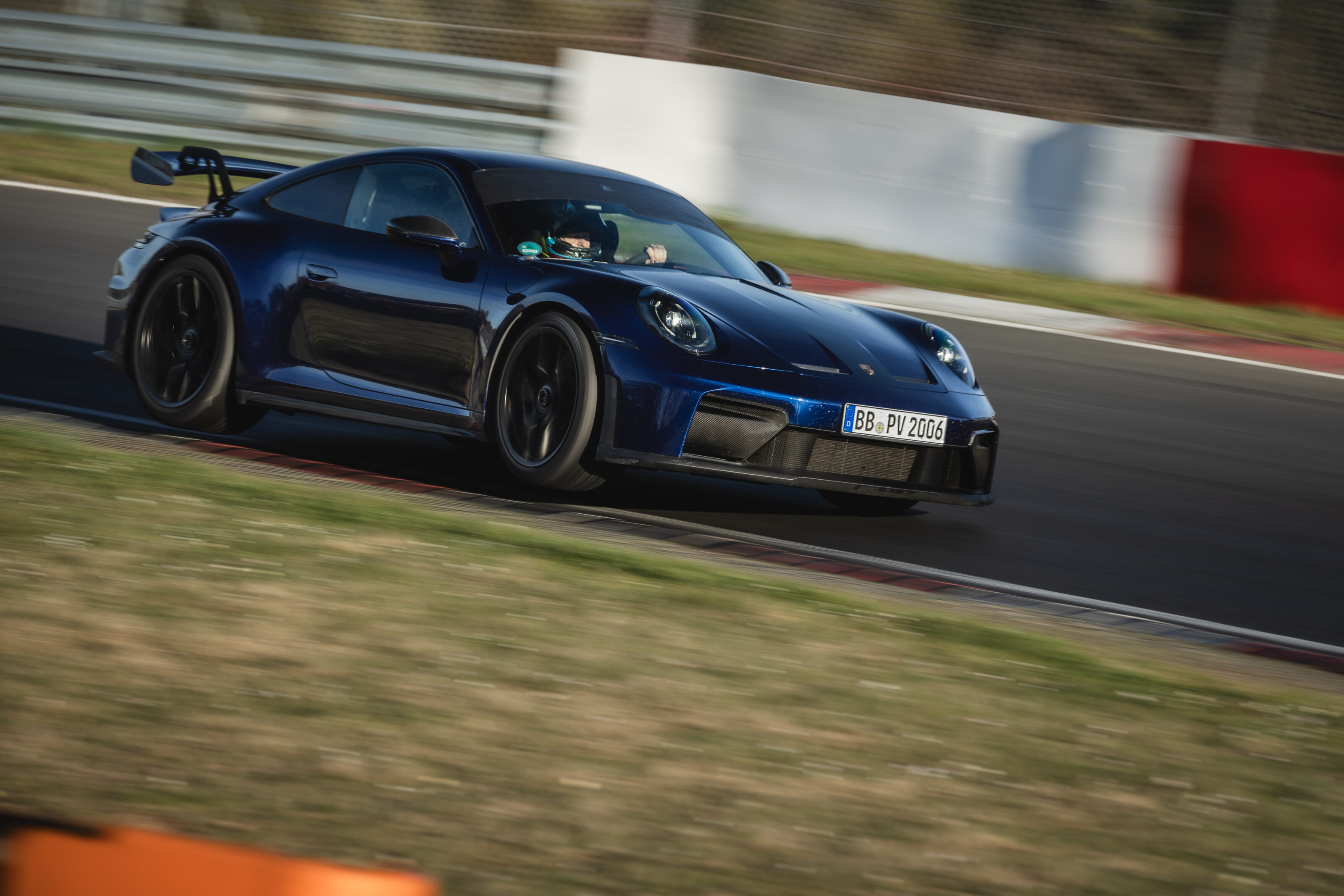
Bergmeister set the new mark on a sunny =afternoon with an ambient temperature of 12 degrees and a track temperature of 27 degrees, taking on the 20.832-kilometre track in the 375 kW (510 PS) 911 GT3 with Weissach package. As with the official lap of the previous model, the car was fitted with road-legal Michelin Pilot Sport Cup2 R tyres (255/35 R20 at the front and 315/30 R21 at the rear).
“The new 911 GT3 inspires even more confidence at the limit than the previous model. I was faster in almost every corner,” said Bergmeister afterwards.

“We learned a lot from the 911 GT3 RS, especially with the chassis. The car is much more stable on bumps and over the curbs. And thanks to the eight-per-cent-shorter gear ratio, there is noticeably more drive from the rear axle when accelerating with the same engine power.
“Even if it would have been a few seconds faster with the seven-speed PDK – with the six-speed manual gearbox I definitely had more to do on the fast lap – and it was therefore even more fun.”
“More and more 911 GT3 customers are opting for the six-speed manual transmission,” said Andreas Preuninger, Director GT Model Line. “And more and more often we are asked by these customers how fast a 911 GT3 with manual transmission would be on the Nordschleife.
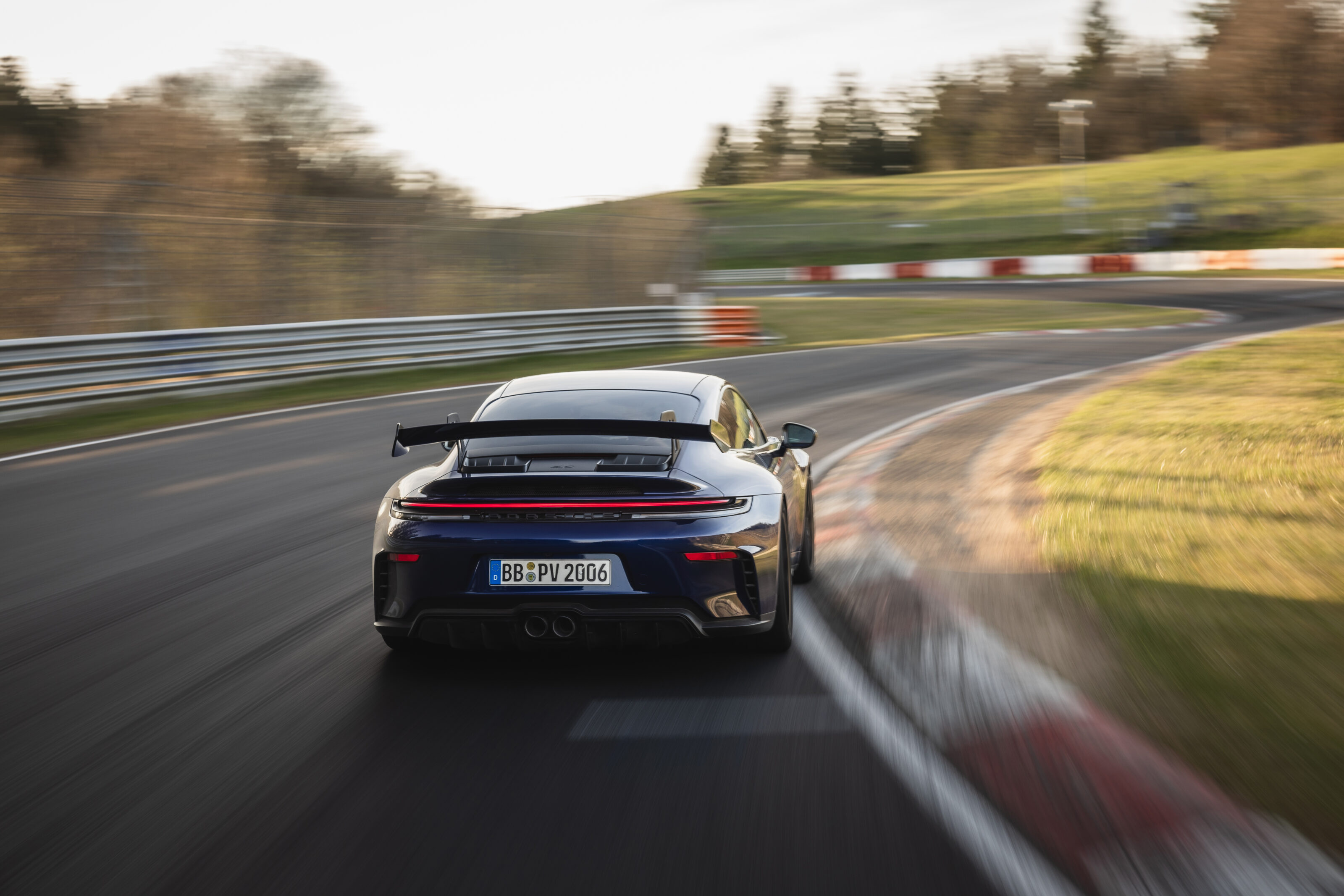
“We have now answered this question and – although we know that the variant with PDK is significantly faster – we drove our official lap time with a manual six-speed gearbox. Even without the automated, super-fast and precise gearshifts of the PDK, and with a conventional instead of electronically controlled limited-slip differential, the new 911 GT3 shaved around 3.6 seconds off the time of its predecessor with PDK.”
Australian deliveries of the new 911 GT3 and 911 GT3 with Touring Package are expected from the 2nd half of 2025.
Debuting overnight at the New York Auto Show, the Subaru Solterra electric mid-size SUV has been given updated exterior styling, added driving range and power, and reduced charging times mirroring that of the upgraded Toyota bZ4x revealed last month. Subaru Australia is yet to confirm local arrival timing.
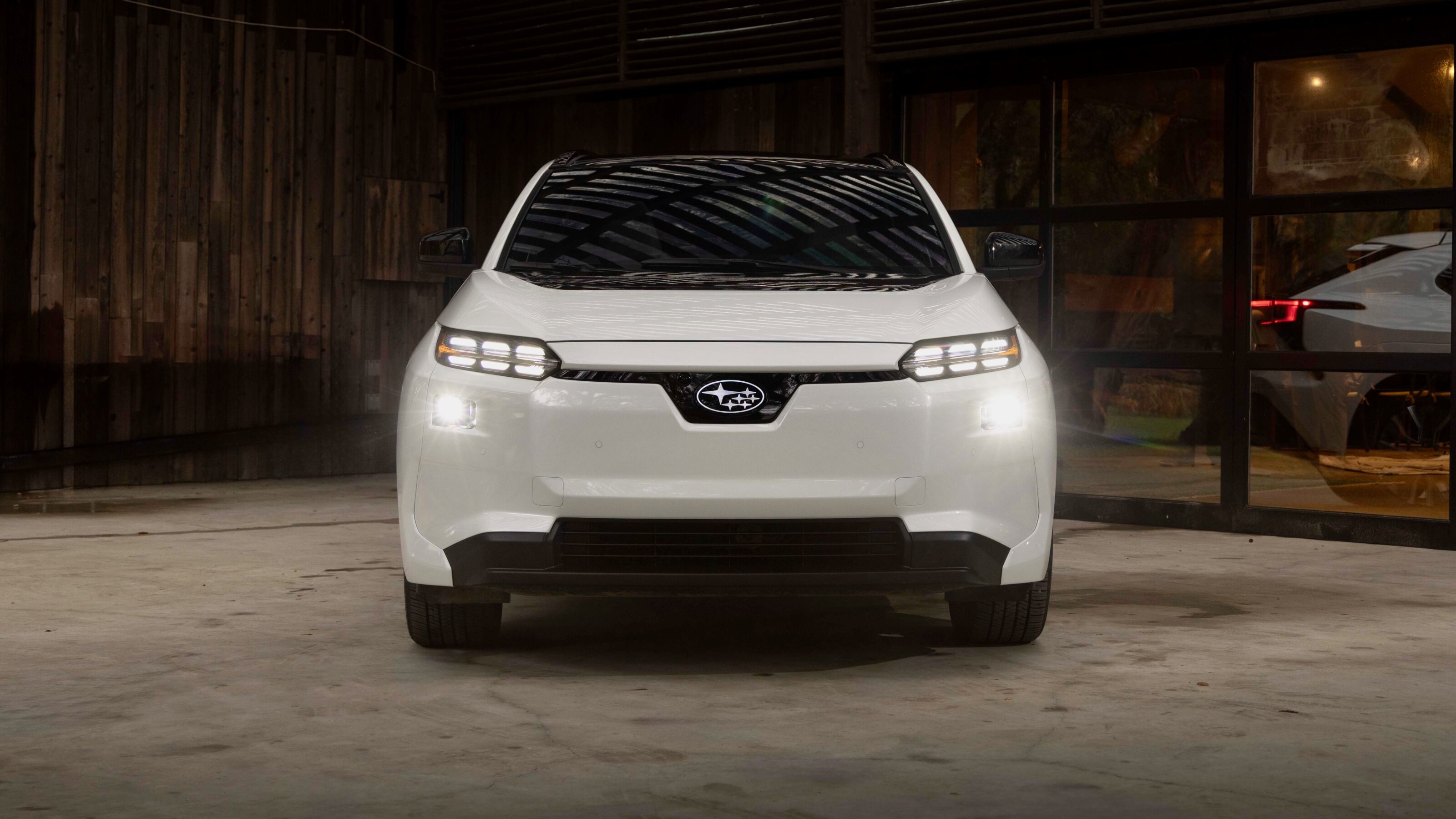
The Solterra has been given an all-new front end design with the cladding of the current model gone and new split-headlights now fitted. The rear has been tidied up and simplified, while there are also new alloy wheel designs in 18- and 20-inch sizing.
Now fitted with a larger 74.4kWh lithium-ion battery – 5 percent more than the current model – the new Solterra’s range has increased by 25 per cent to 459km. The Solterra is also now able to be fast charged at up to 150kW for an approximate 10 to 80 per cent charge in as little as 35 minutes, according to Subaru.
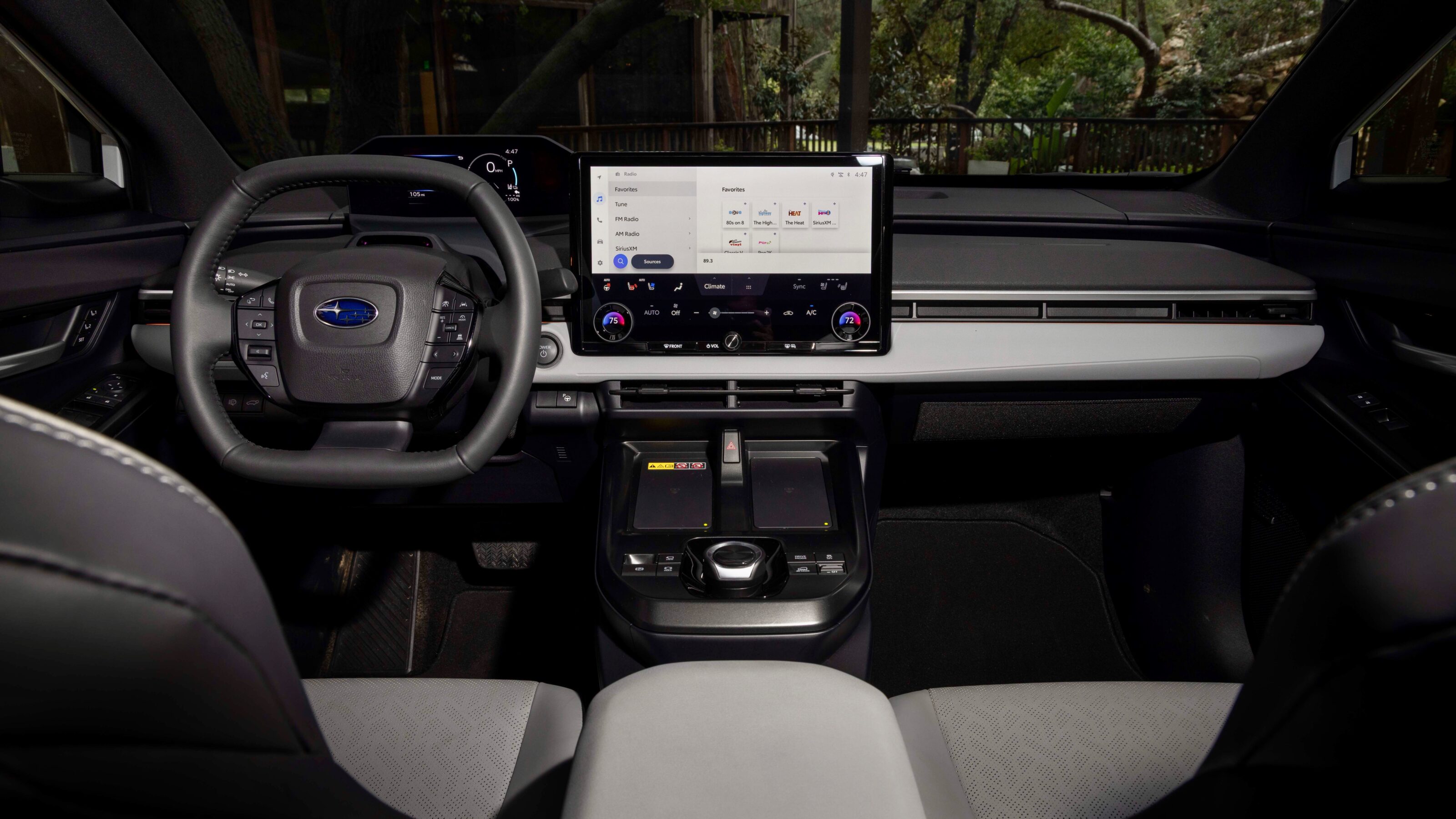
The company has also upgraded its electric motors with the new base model now outputting 174kW and a new higher-performance XT in the US making 252kW – both healthy increases on the 160kW figure in the current model.
There have also been changes to the Solterra’s suspension and power steering tuning, which Subaru promises will improve its handling, and a new all-wheel drive control system has also been fitted.
On the inside, the updated Subaru Solterra’s cabin closely resembles the updated bZ4x’s cabin with a new 14-inch touchscreen with wireless Apple CarPlay and Android Auto and a 15W wireless charger sitting in a new centre console.
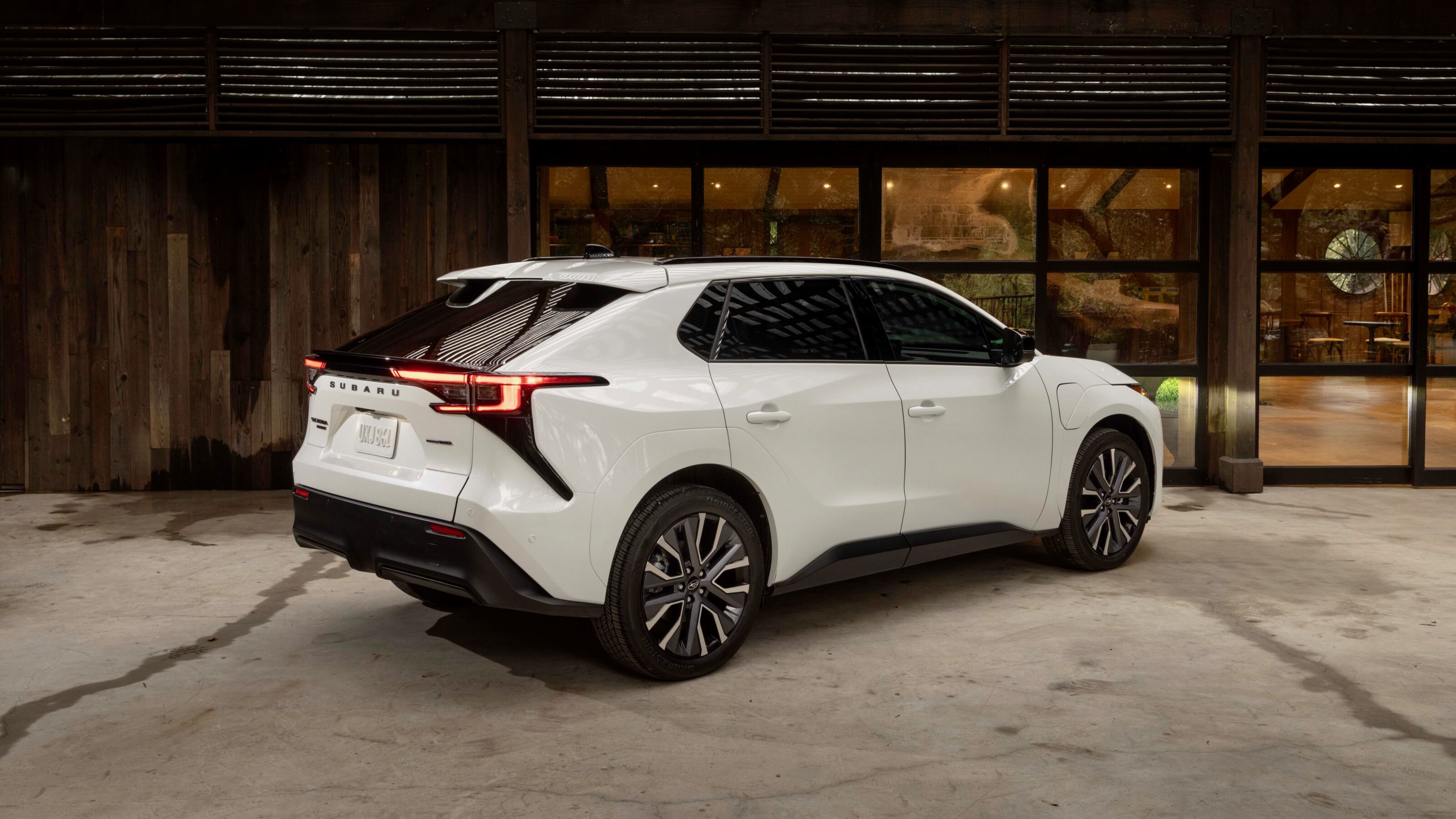
Subaru is yet to confirm local availability for the updated Subaru Solterra, but the updated bZ4x’s arrival in late 2025 may give a clue as to its Australian arrival.
The off-road version of the new Hyundai Palisade large SUV that was revealed back in December 2024 has been confirmed for release in Australia, with the Hyundai Palisade XRT Pro due on local shores in the first half of 2026.
Revealed overnight at the New York Auto Show, the XRT Pro gives the Palisade more off-road ability, ground clearance and styling compared with the more road-focused regular Palisade.
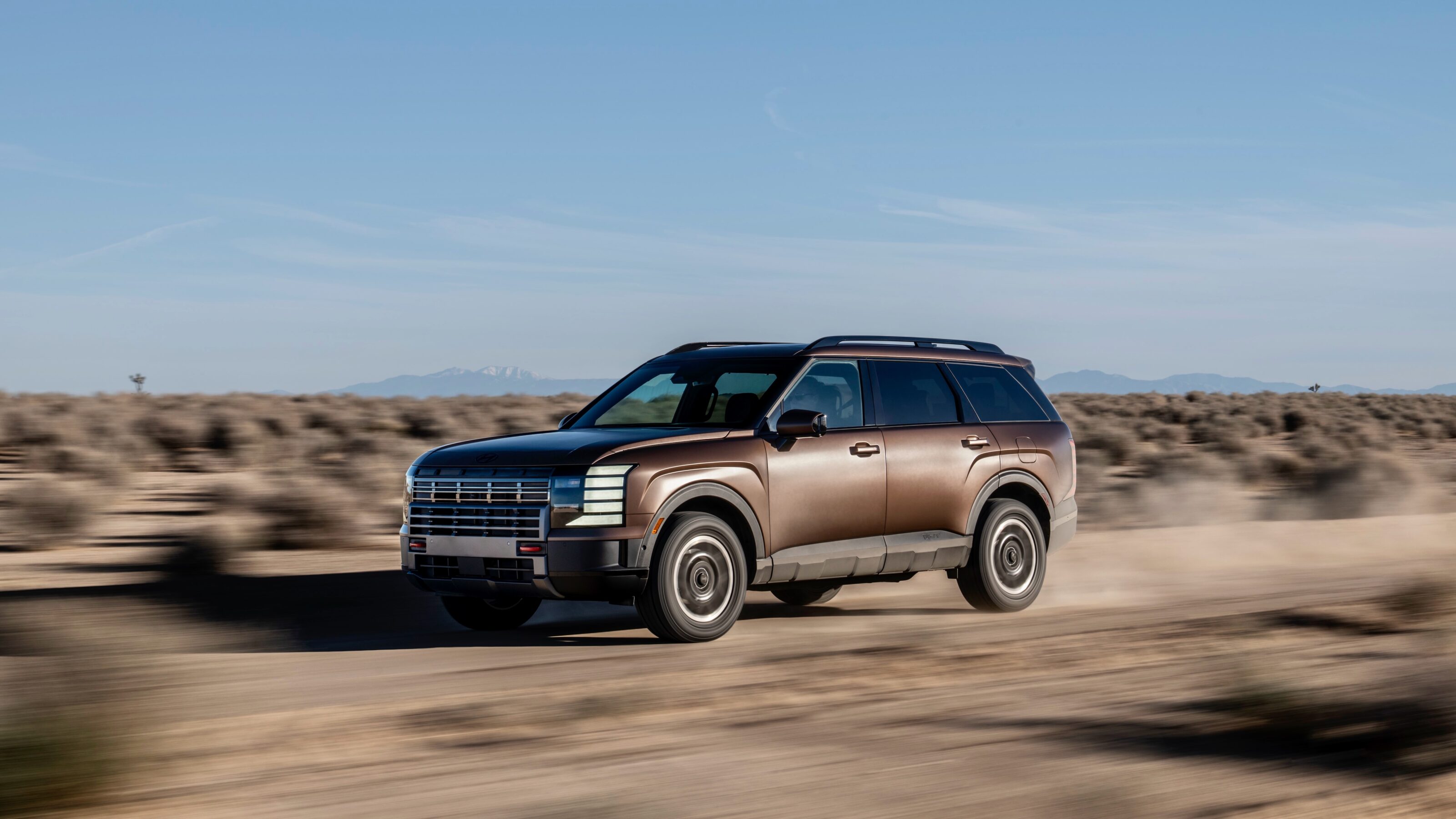
Most noticeable are the new 18-inch alloy wheels with all-terrain tyres giving the Palisade XRT Pro a 25mm boost in ground clearance to 213mm, but there are also new styling details such as unique front and rear bumpers. Hyundai has also fitted a rear electronic limited-slip differential for more off-road ability.
The exterior changes have improved its approach, departure and breakover angles, now at 20.5, 22.4 and 18.3 degrees respectively, while the XRT Pro can display pitch, roll, elevation and compass information in real time. It also features exposed recovery hooks, a factory-installed tow hitch and three new drive modes: mud, sand and snow.
The exterior also features darkened exterior accents, while its 360-degree camera can display a ‘forward ground vision’ mode for enhanced visibility while off-roading.
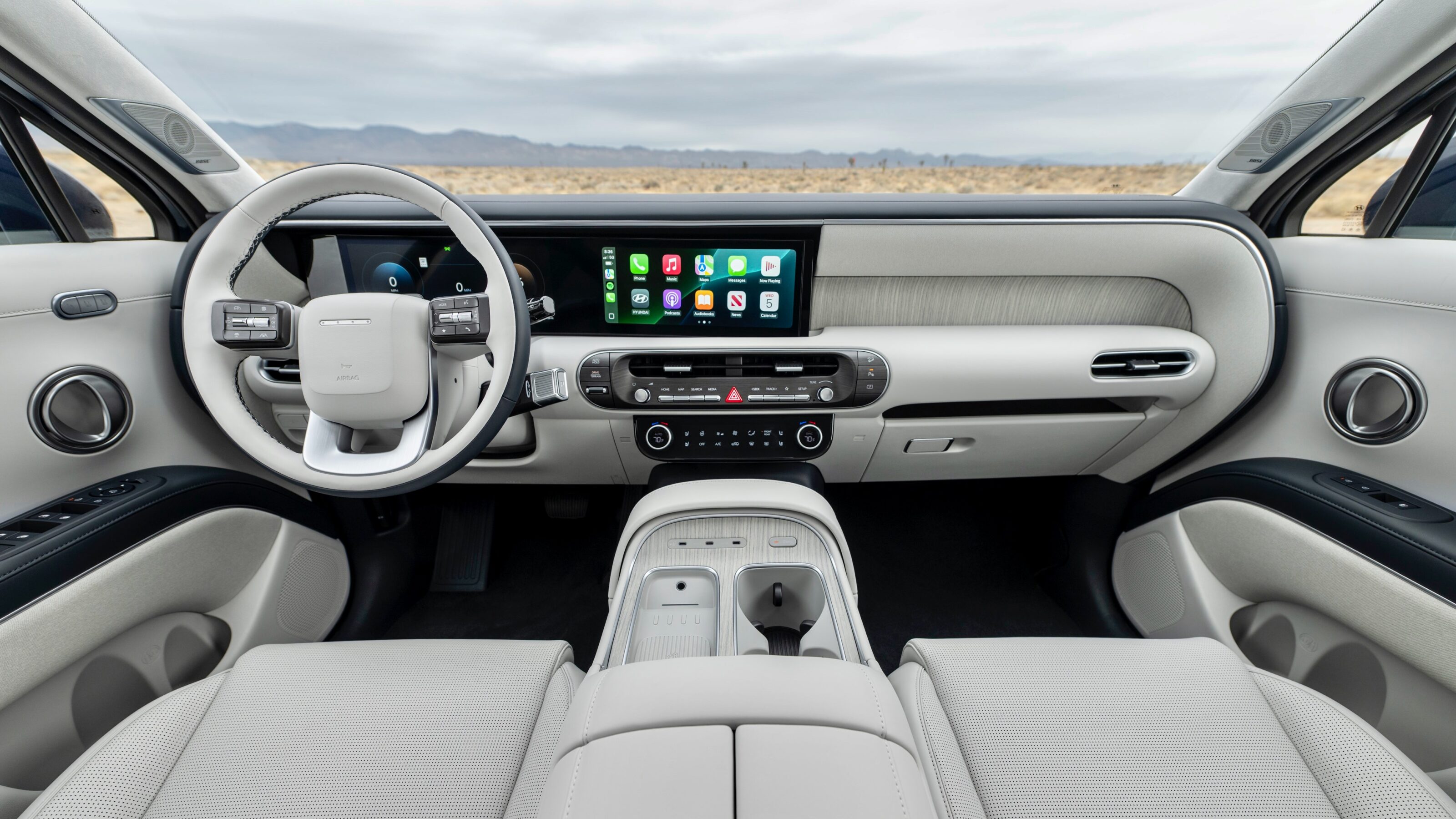
On the inside of the Hyundai Palisade XRT Pro are ‘H-Tex’ leatherette seating surfaces with front heating/ventilation, a heated steering wheel, a 14-speaker Bose sound system, ambient lighting, a 115-volt power outlet and a sunroof.
Though Hyundai has confirmed that all Australian-spec Palisades will feature a new 245kW/450Nm 2.5-litre turbocharged four-cylinder hybrid mated to a six-speed automatic transmission – in the US at least – the Palisade XRT Pro is powered by a 214kW/353Nm 3.5-litre petrol V6 engine mated to an eight-speed auto, potentially opening the door for that drivetrain in Australia.
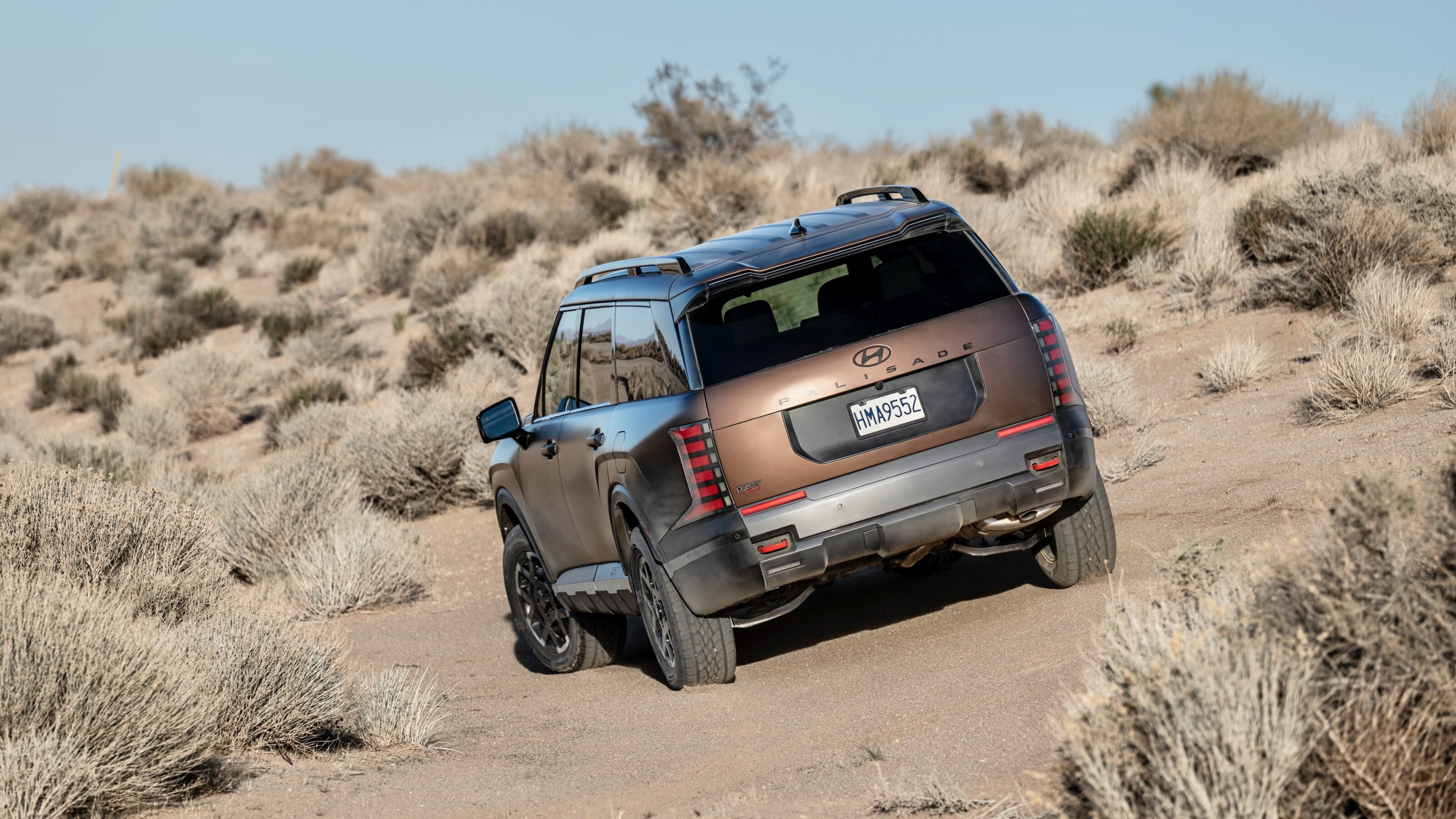
The Hyundai Palisade will go on sale in Australia in late 2025, with the XRT Pro launching in the first half of 2026.
Kia Australia has confirmed pricing for its Dual Cab Pick-Up variant of the heavily promoted Kia Tasman ute, ahead of pre-orders opening before its arrival into dealerships in July.
The Dual Cab Pick-Up range opens at $42,990 RRP for the S 4×2 trim and ramps up to $74,990 RRP for the X-Pro 4×4 flagship that has been specifically engineered for enhanced off-road performance characteristics.
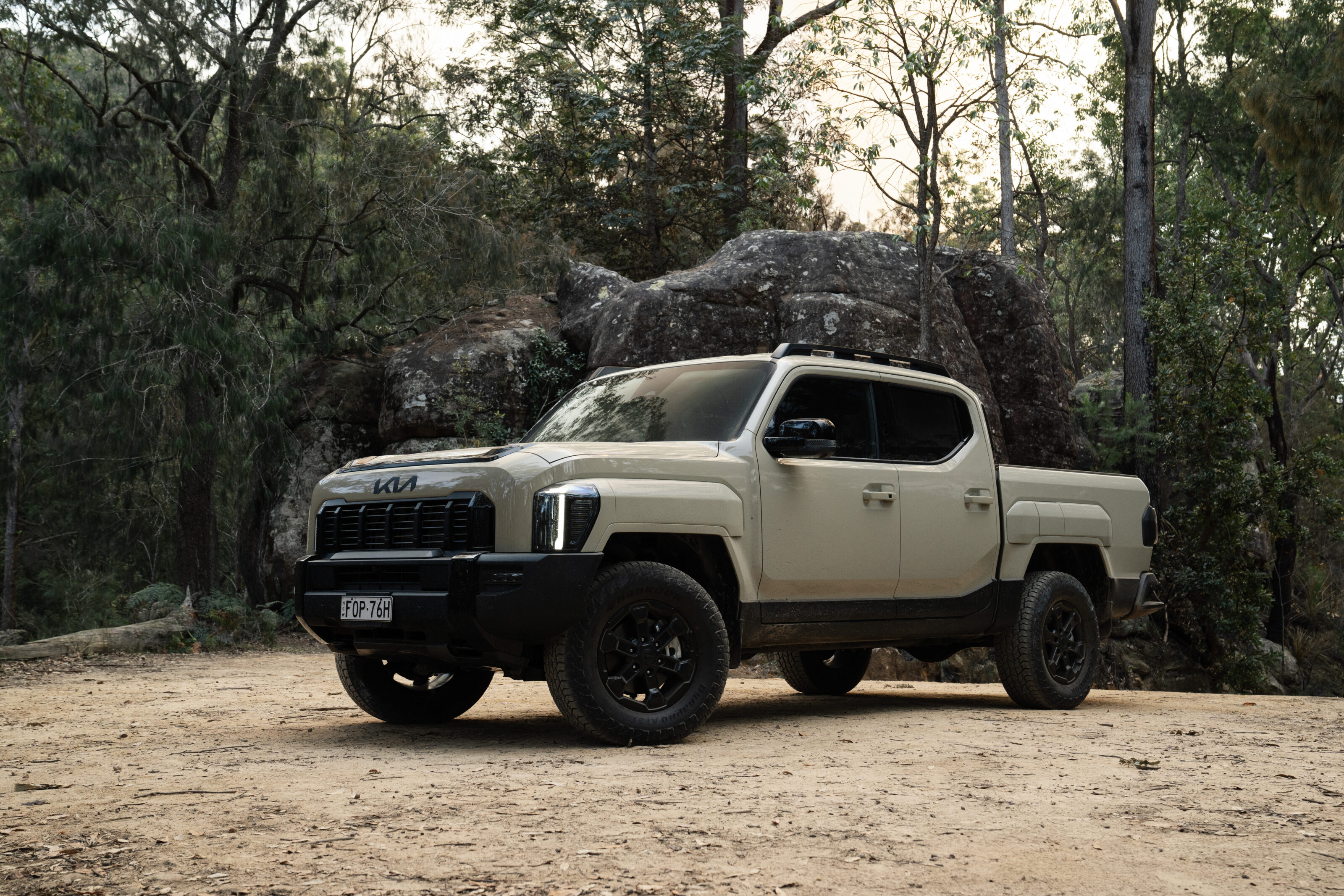
Dual Cab Pick-Up trims will launch concurrently in July. The Dual Cab Chassis will arrive approximately one month later followed by the Single Cab Chassis in late 2025.
Pricing for these two variants will be announced at a later date.
Australian pricing
| S 4×2 | $42,990 |
|---|---|
| S 4×4 | $49,990 |
| SX 4×4 | $54,490 |
| SX+ 4×4 | $62,390 |
| X-Line | $67,990 |
| X-Pro | $74,990 |
“The Tasman is by far Kia Australia’s most anticipated model yet, reflecting the scale of Australia’s ute market and the passion of these owners,” said Kia Australia Chief Executive Officer, Damien Meredith.
“We are confident the input from Kia Australia at each stage of its development, along with its competitive value and versatility, will make it a very strong contender in the local market.”
Under the bonnet of all Kia Tasman models in Australia is a 2.2-litre four-cylinder turbo-diesel
engine making 154kW of power and 440Nm of torque that’s mated to an eight-speed torque
converter automatic transmission. The base Tasman S is available in two-wheel drive form, but all
other models are four-wheel drive.
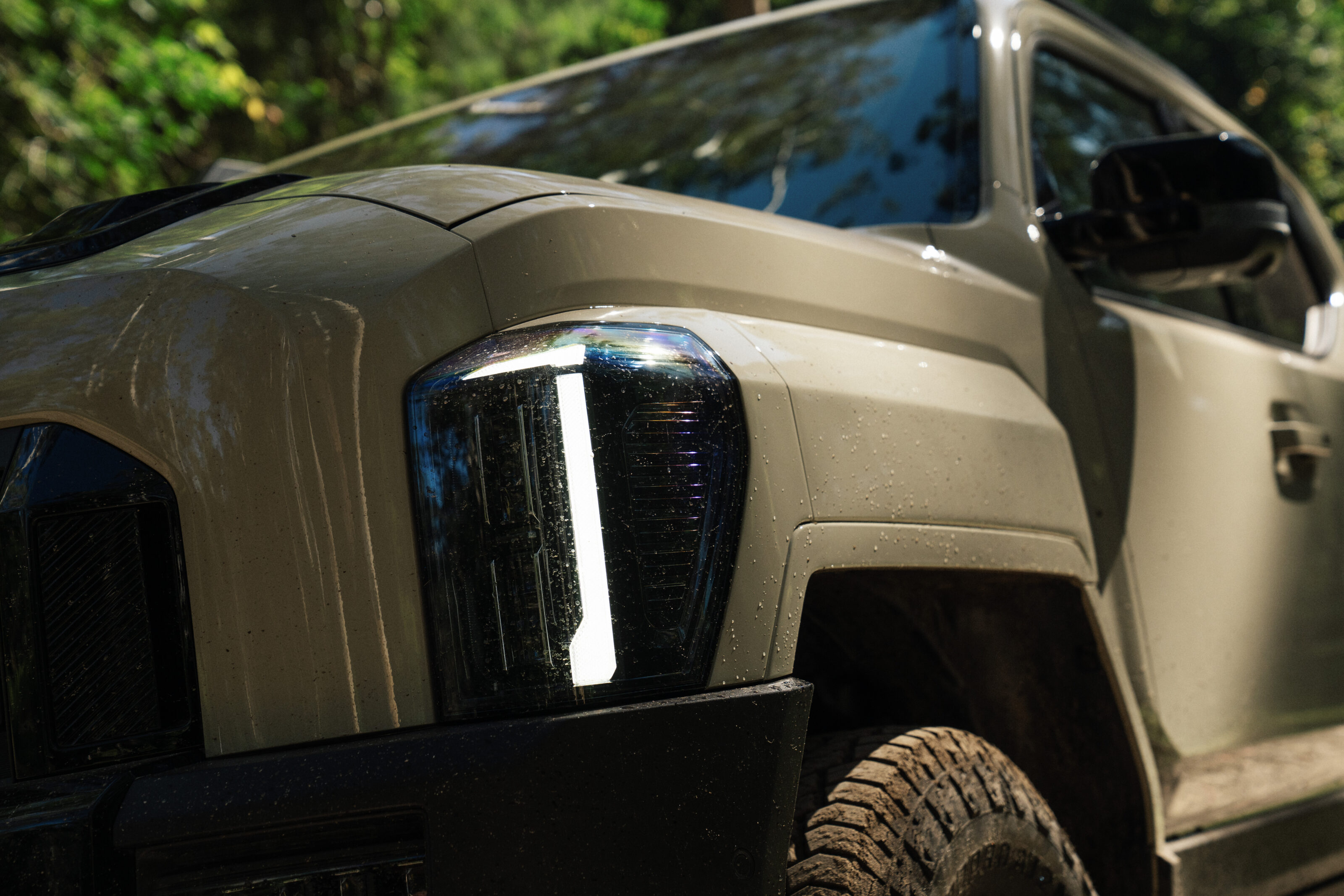
All Tasman models can tow a 3,500kg braked trailer and are available with payload ratings
exceeding 1,000kg, with even the best equipped X-Pro capable of carrying 1,013kg – the highest
possible payload is with the base S 4×2 single cab chassis, which is rated for 1,124kg. All payloads
exceed 1,000kg based on a gross vehicle mass (GVM) rating of 3,250kg across all variants,
contributing to a gross combination mass (GCM) of 6,200kg.
Importantly for some buyers however, all dual cab pick-up variants are also available with a
reduced payload option specifically at meeting the criteria for novated leases, which often require a
payload of under 1,000kg. For now, the Kia Tasman will only be available in dual-cab form, but in
late 2025, Kia will launch a single cab chassis bodystyle as well.
Kia Tasman S standard equipment:
- Kia Tasman S standard equipment:
- 17-inch black steel wheels with a full-size spare wheel
- Keyless entry with push button start
- 12.3-inch + 5-inch + 12.3-inch screen set up
- Dual-zone automatic climate control
- Wireless Android Auto and Apple CarPlay
- MFR LED headlights
- Cloth upholstery
- AEB with pedestrian and cyclist monitoring
- Adaptive cruise control
- Rear parking sensors
- Reversing camera (pick-up only)
- Tailgate with lift assistance (pick-up only)
- Integrated trailer brake controller
- Tasman SX model adds:
- 17-inch alloy wheels
- Snow, sand and mud drive modes
- Satellite navigation
- Auto-folding mirrors
- Adaptive lane guidance
- Tasman SX+ model adds:
- 18-inch alloy wheels
- Cloth/synthetic leather trim
- Ambient mood lighting
- Rear air vents
- 2x 240V power outlets
- Wireless phone charger
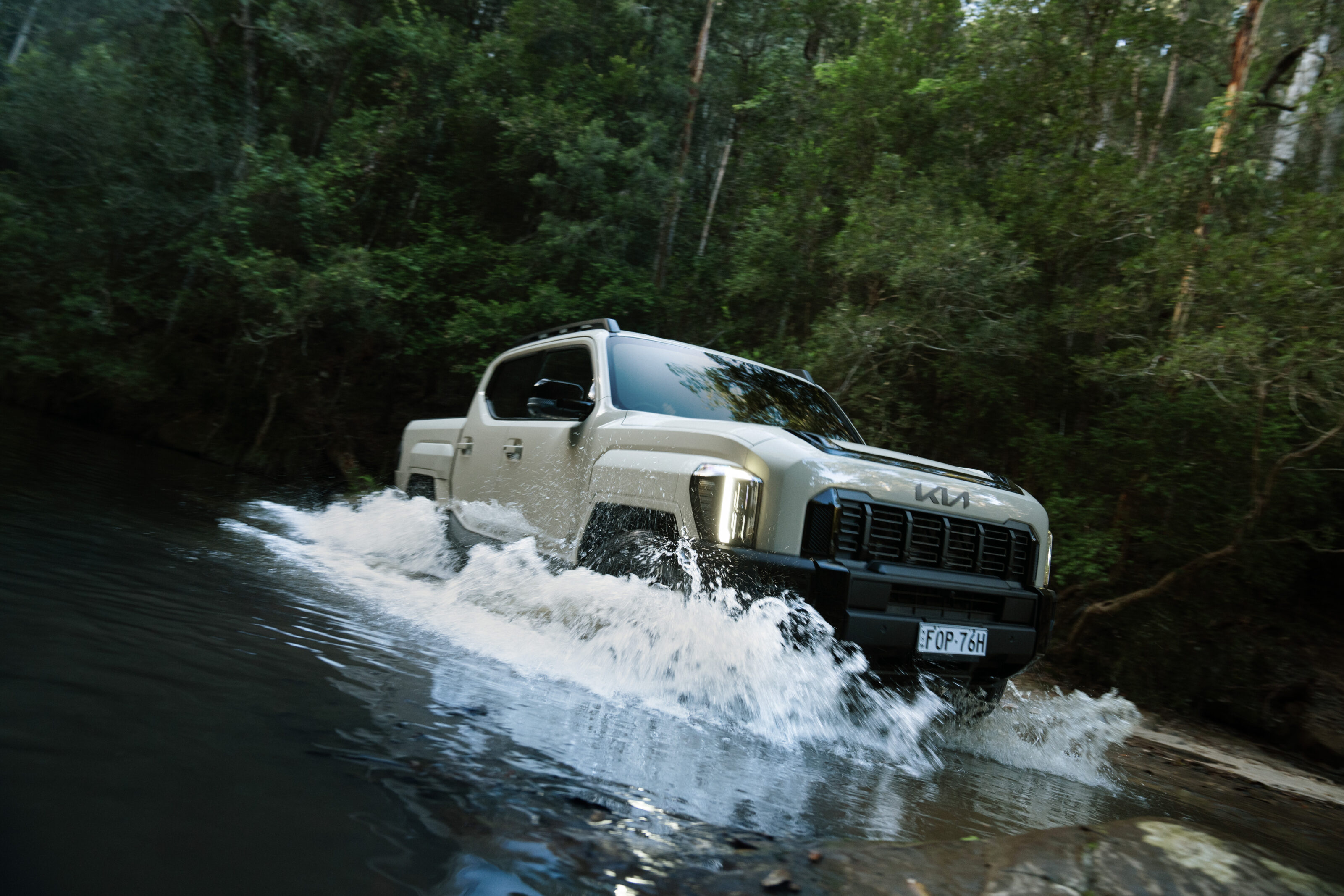
Tasman X-Line model adds
- Column shifter
- Paddle shifters
- Privacy glass
- Roof rails
- Double wireless phone charger
- Projector LED headlights
- 360-degree camera
- Blind-spot camera
- Synthetic leather trim
- Heated front seats
- Slide/recline rear seats
- 8-way electric driver’s seat
- Rear auto braking
- Rear fender flare storage
Tasman X-Pro model adds:
- Black 17-inch wheels with all terrain tyres
- Electronic locking differential
- X-Trek mode
- Rock mode
- Ground view monitor
- Harman Kardon sound system
- Heated steering wheel
- Heated rear seats
- Ventilated front seats
- 8-way electric front passenger seat
- Sunroof
- Off-road screen page
- Fuel tank undercover protection
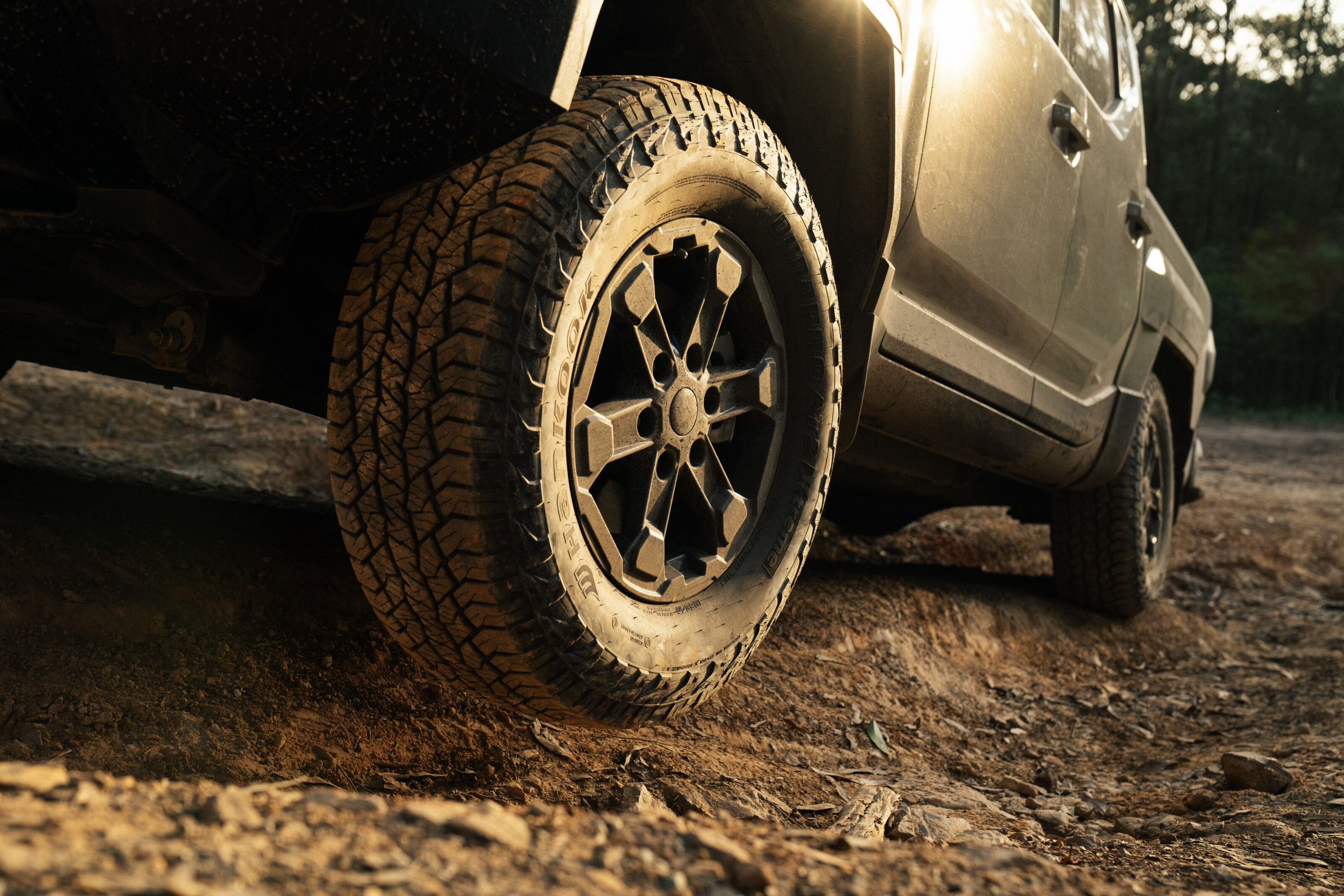
The 2026 Subaru Outback has debuted overnight at the New York Auto Show in the US ahead of a likely 2026 Australian release. It sports a taller and more SUV-like look this time around, ditching the traditional high-riding wagon styling that it has used until now.
Underneath the body are familiar drivetrains, though a hybrid could be part of the eventual local launch – just like the smaller Forester.
The Outback’s styling is noticeably boxier than before, with a squarer and more upright front end with split headlights, a massive grille and larger windows. The rear features a single tail-light panel with large Outback badging and an even larger ’S U B A R U’ lower bumper insert.

Wheels up to 19-inches in size are available for the first time, while the brand has also tried to implement more clever storage solutions like a washable tonneau cover in the boot, which can be used to partition pets or even cover the bumper from scratches.
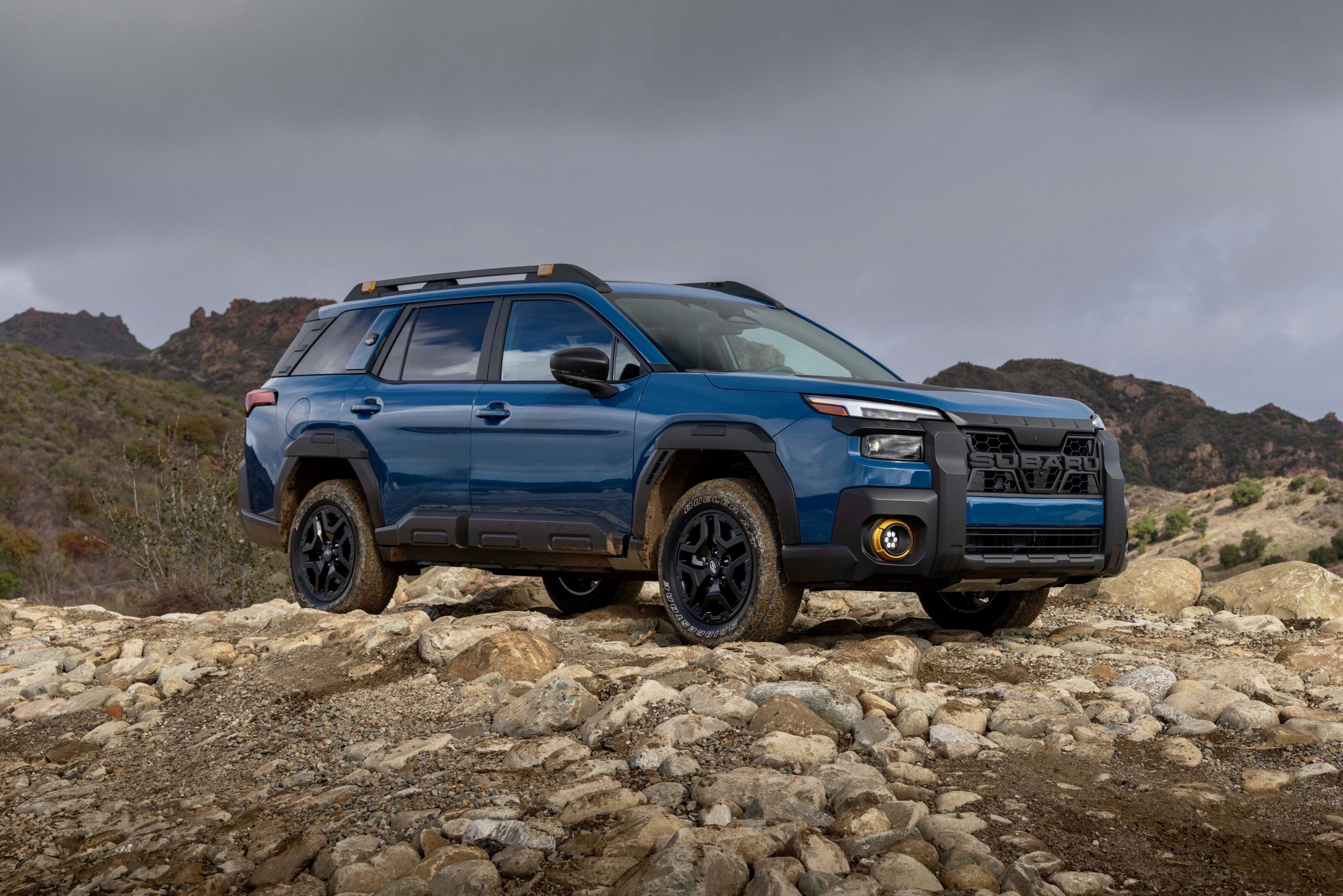
For the first time too, an Outback Wilderness will be available with the 2026 Subaru Outback. Wilderness is Subaru’s off-road sub-brand that has been limited to the Forester and Crosstrek in North America, though is now available on the Outback too – and because of the new model’s Japanese production source, could make it to Australia for the first time.
The Wilderness adds a whole host of off-road styling features like new bumpers to enhance approach and departure angles, extended cladding, 17-inch wheels with off-road tyres, washable ‘StarTex’ upholstery and copper styling accents inside and out.
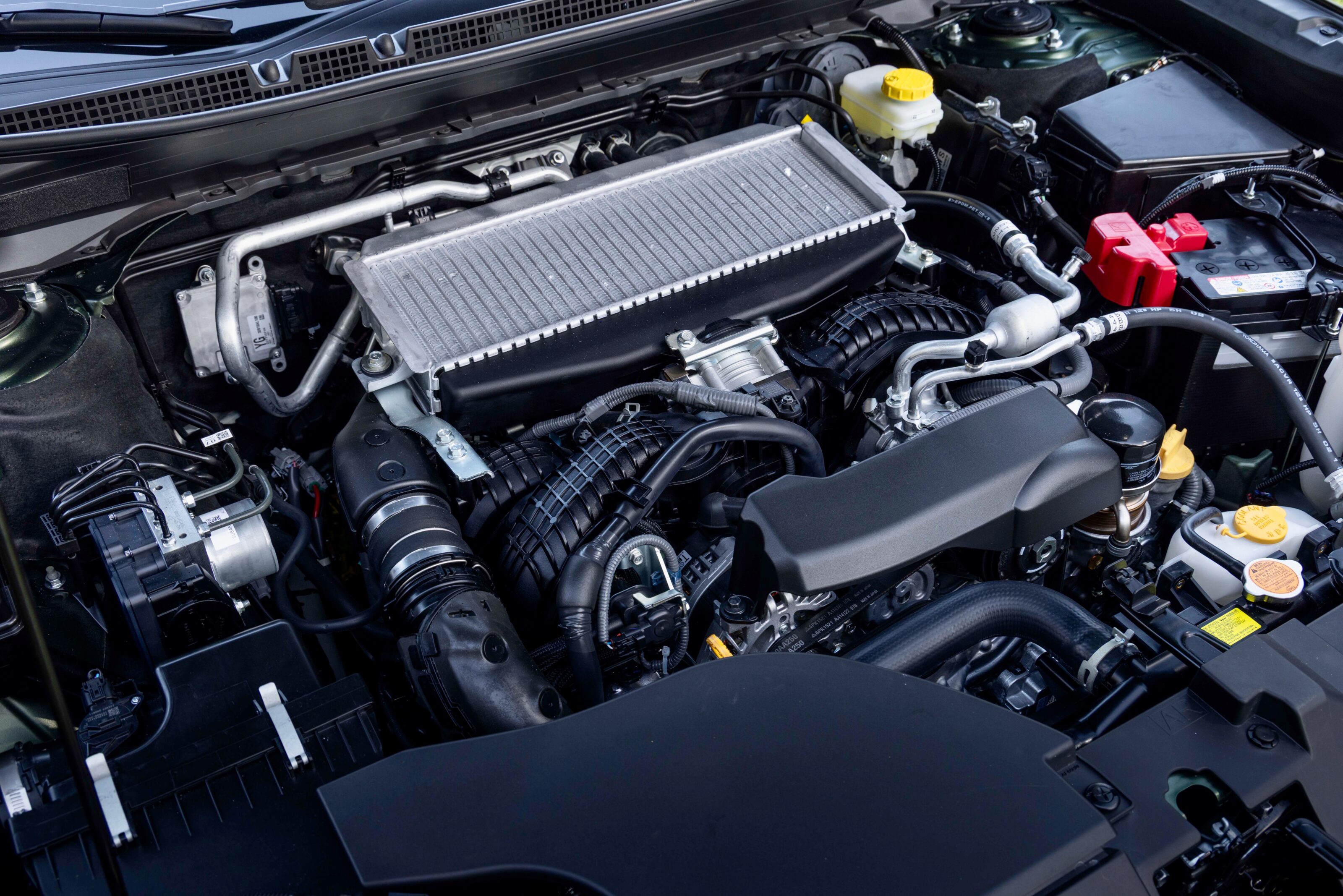
In the US, two familiar four-cylinder ‘Boxer’ engine options will be available: a naturally aspirated 134kW/241Nm 2.5-litre or a 194kW/376Nm turbocharged 2.4-litre, both tied to a CVT automatic transmission with eight artificial gears and the company’s ‘symmetrical’ all-wheel drive system. A 2.5-litre ’strong hybrid’ option, like in the new-generation Forester, will also likely eventuate.
Inside the 2026 Subaru Outback is a new more upscale look than before, with a 12.1-inch touchscreen across the range featuring a new software system and powered by a new processor that promises faster responsiveness than before.
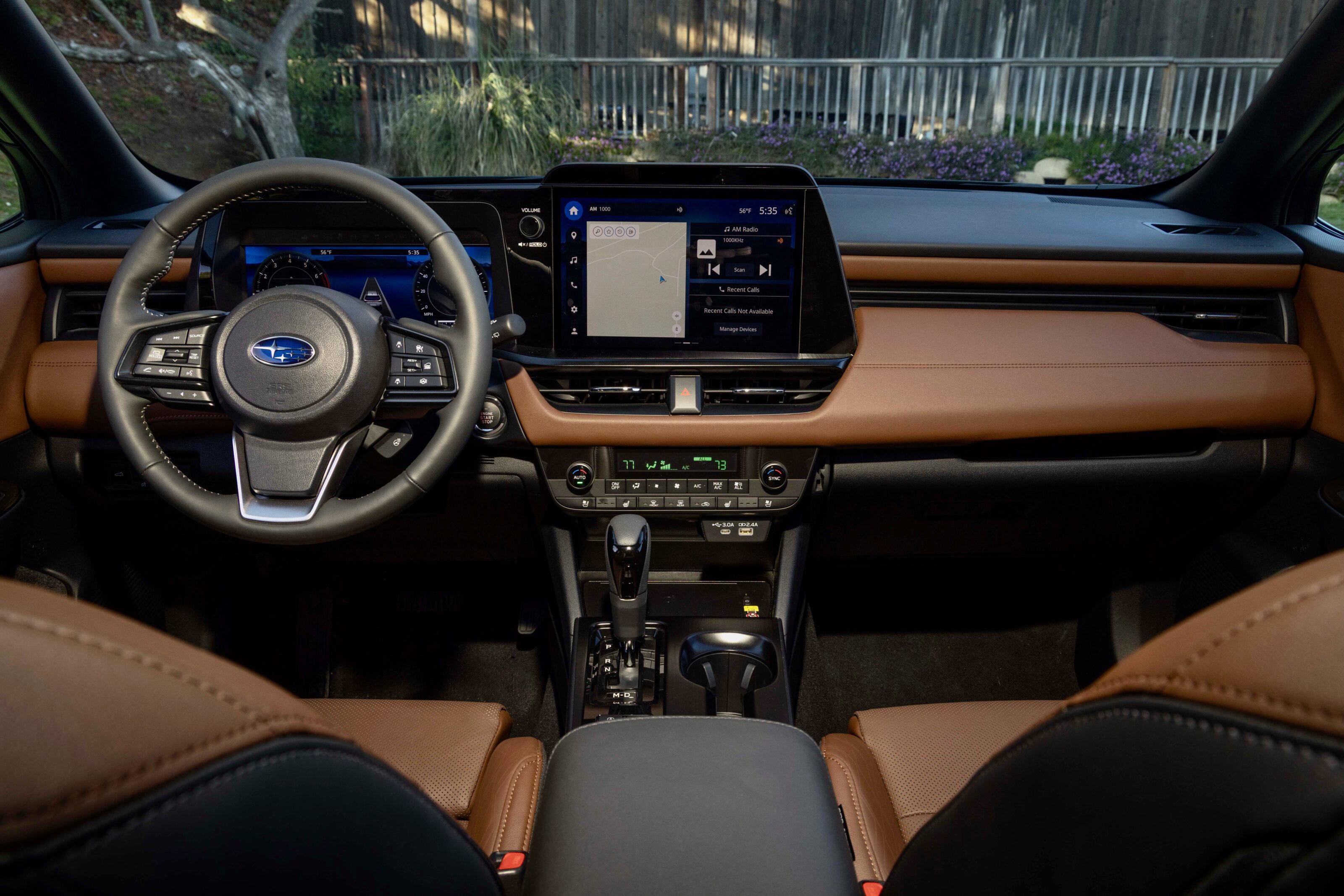
A 12.3-inch digital driver’s display also features, while the company has returned to traditional climate control buttons having done without them in the current model, while features such as Nappa leather upholstery, ventilated front seats and a sunroof are available in the US.
While the Outback rides on the same platform as the previous model, and Subaru is yet to announce full dimensions, it appears to be longer than the current model and it’s 51mm taller. Because of that, Subaru says the interior is roomier than before, while also claiming that refinement has been enhanced thanks to aerodynamic changes.
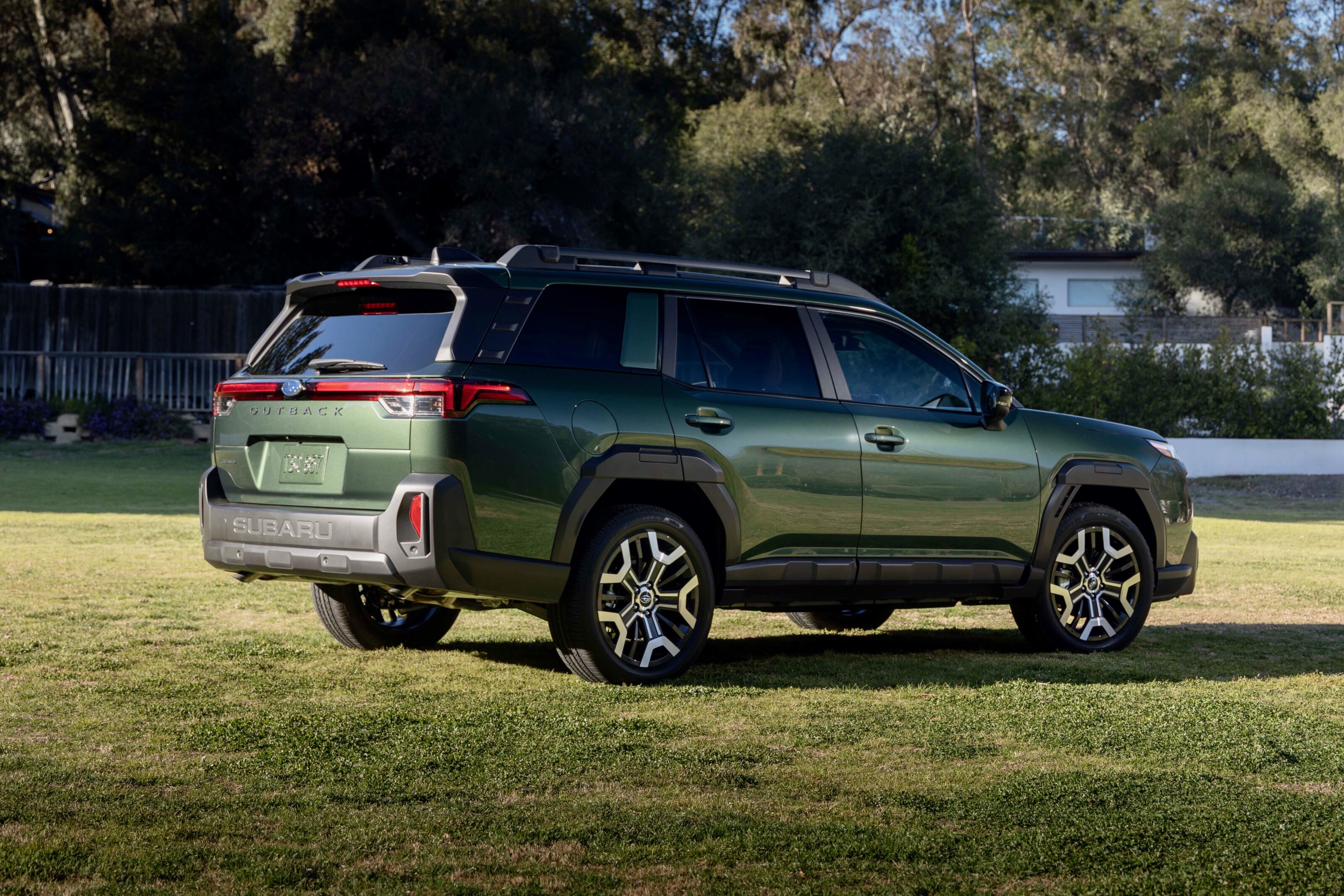
Subaru Australia is yet to confirm timing for the Outback’s local debut, but it’s likely to land in 2026 with full pricing and specifications to be confirmed before then.
The Toyota LandCruiser 300 Series has been given its first update since launching in 2021 with a lot of new equipment added across the range, including new infotainment systems, more safety kit and more comfort features as well. Pricing starts at $97,990 plus on-road costs for the entry-level GX with price rises of up to $2,029 across the range.
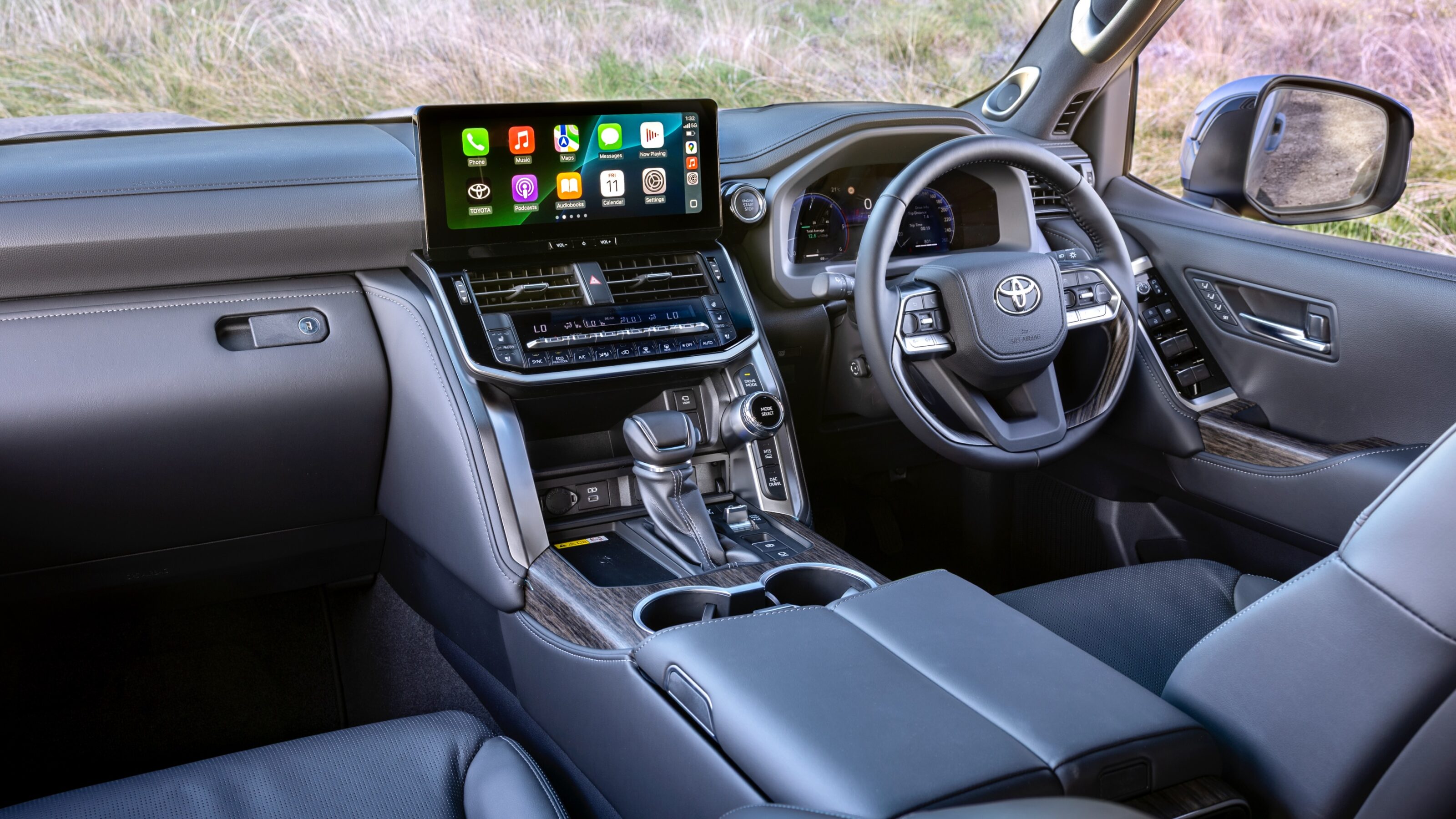
Most importantly, Toyota has upgraded the LC300’s safety features with all models now equipped with active lane trace assist and emergency assist (previously exclusive to the VX and above), and Toyota’s new emergency driving stop system – if the driver is unresponsive and the adaptive cruise control and lane trace assist activated, the car will pull over safely by itself. The GXL and above has also gained automatic rear braking and door exit warning.
The LC300’s remote services now includes air-conditioning activation, while the GX and GXL now feature a 7.0-inch digital driver’s display with higher models moving to a 12.3-inch unit.
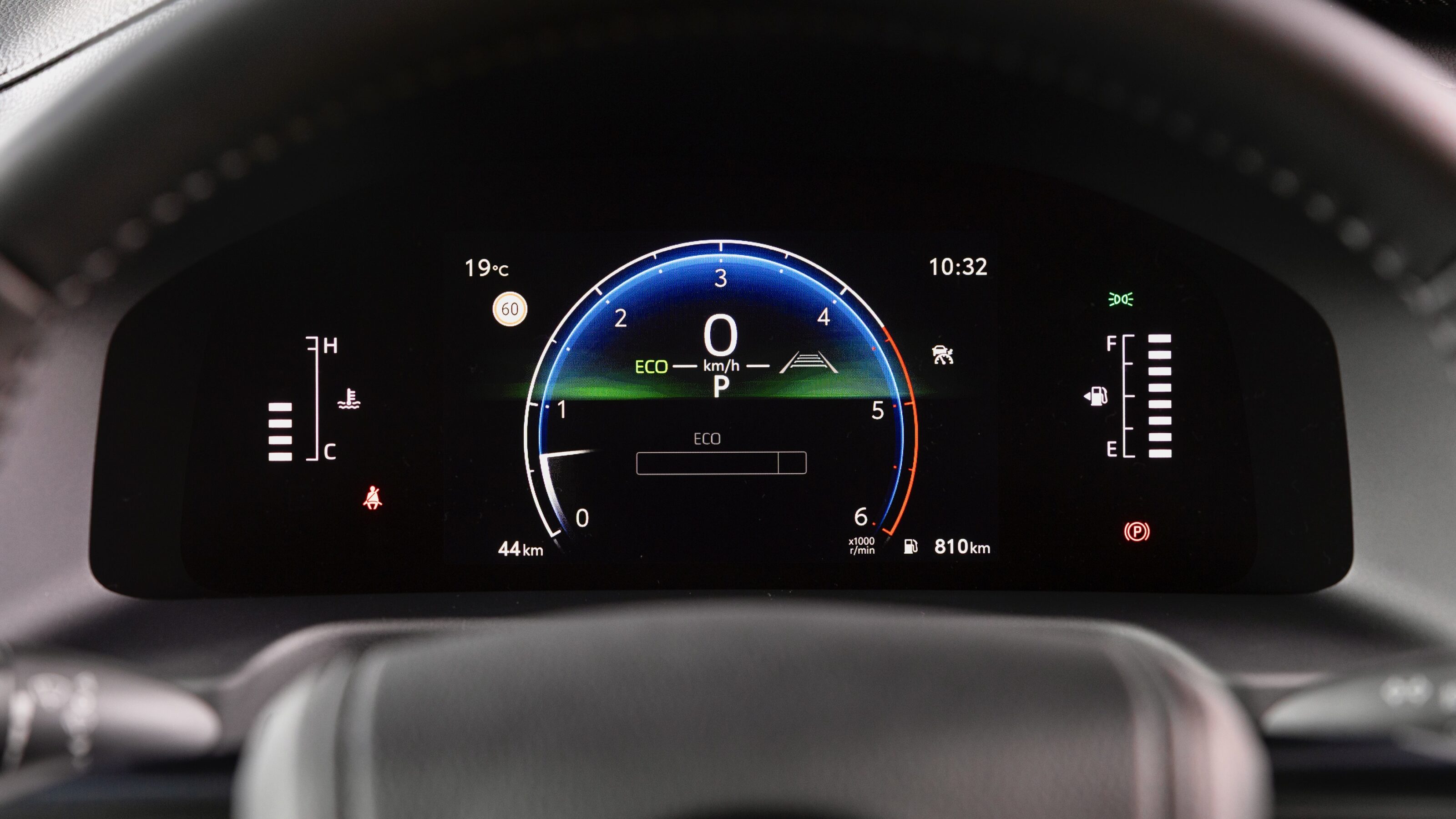
Toyota’s new infotainment software now features across the range on 8.0- (GX and GXL) and 12.3-inch (higher models) displays, now with wireless Apple CarPlay and Android Auto, as well as connected navigation services and over-the-air updates.
In terms of model-specific changes, the GX now features a power-adjustable steering column, first row LED lighting and reversing camera guidelines.
The GXL now features suede and fabric upholstery, an eight-way power-adjustable driver’s seat with lumbar adjustment, quad-zone automatic climate control, a centre console cool box and a 40/20/40-split folding second-row of seating.

The mid-range VX now features an eight-way power-adjustable passenger seat and a power tailgate, while the GR Sport has added a tailgate puddle lamp. Aside from the infotainment changes, the Sahara and Sahara ZX are unchanged.
There have been no changes under the bonnet of the LC300, with the 227kW/700Nm diesel V6 engine and 10-speed automatic transmission continuing as before.
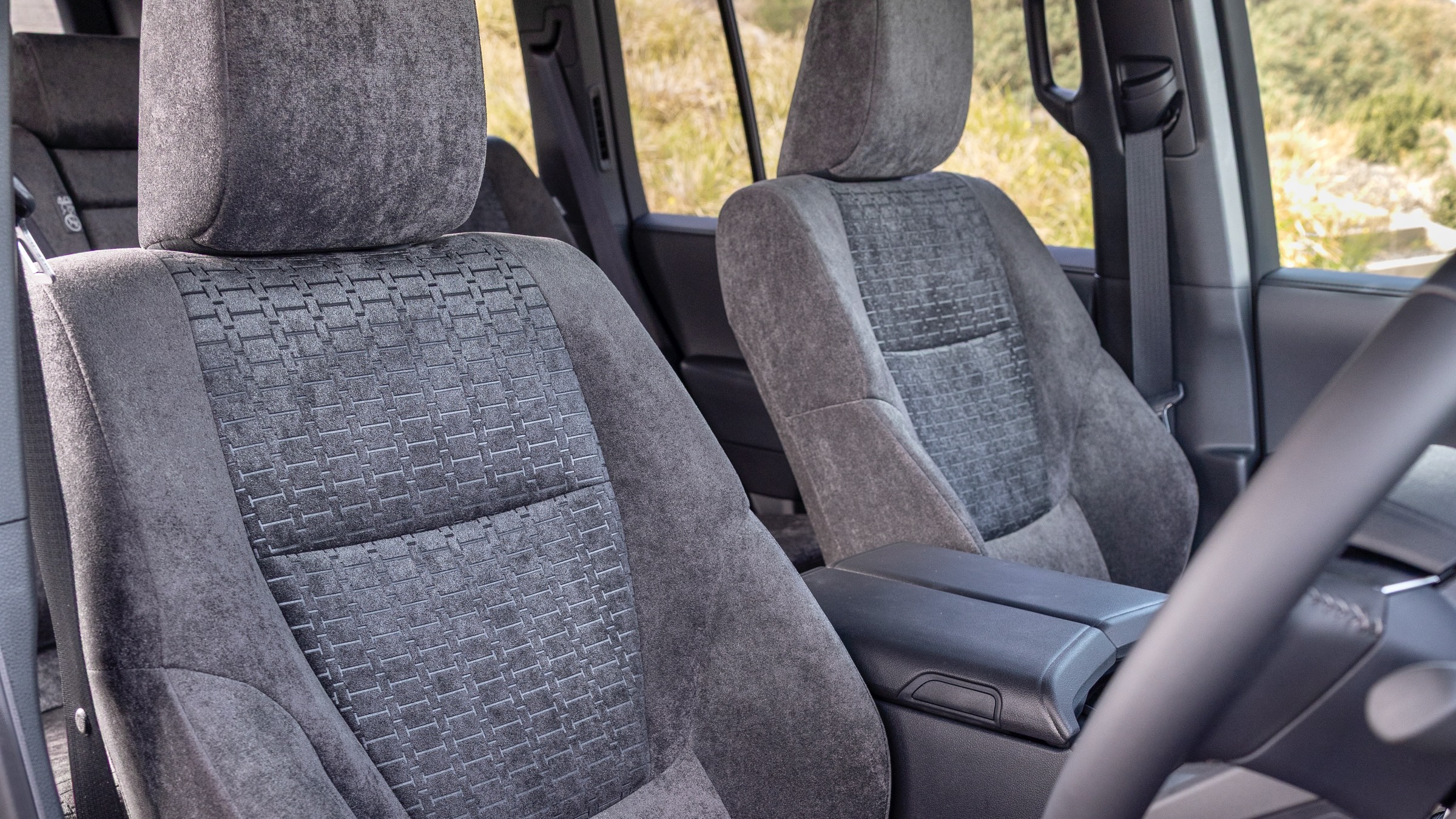
2025 Toyota LandCruiser 300 pricing (plus on-road costs):
- GX: $97,990
- GXL: $110,820
- VX: $122,510
- Sahara: $139,310
- GR Sport: $146,160
- Sahara ZX: $146,910
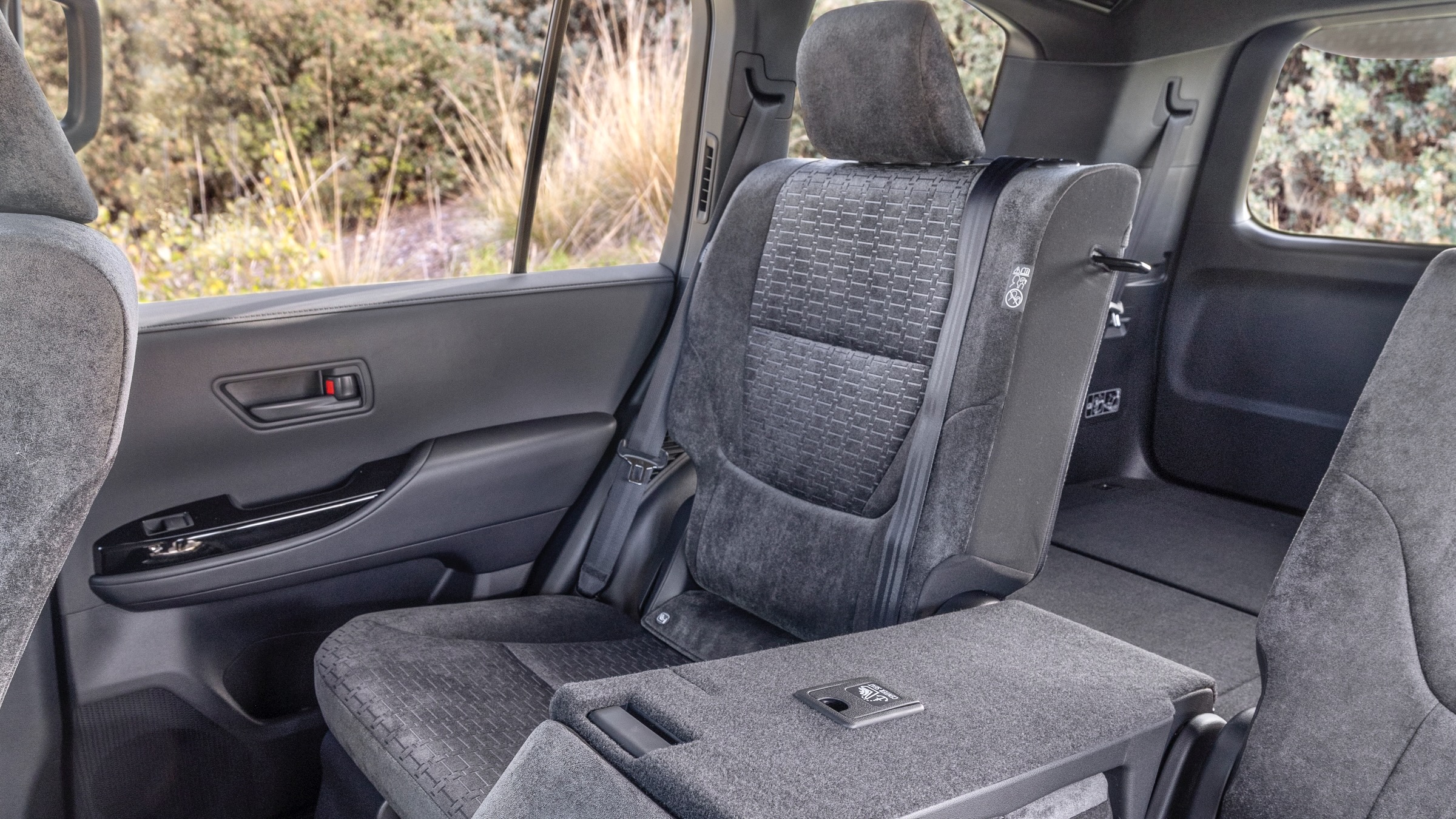
The 2025 Toyota LandCruiser 300 Series is now on sale with first deliveries commencing soon.
The Hyundai Inster, the brand’s smallest EV to date, is now on sale in Australia priced from $39,000 plus on-road costs. Offered in three models locally: Standard Range, Extended Range and off-road-themed Cross, the Inster will offer up to 360km of range and DC fast charging at up to 120kW.
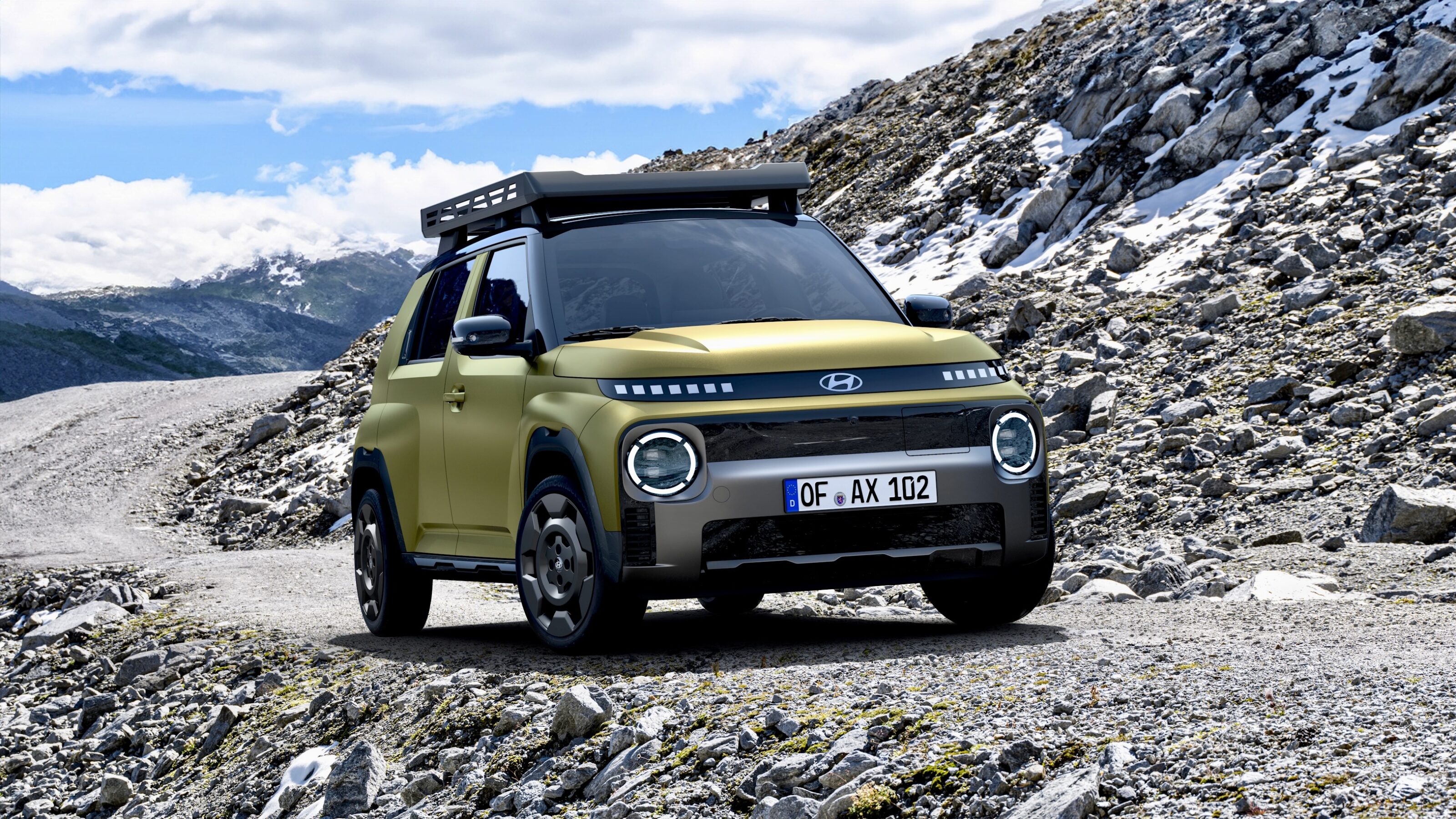
Powering the Hyundai Inster Standard Range is a 71kW/147Nm front electric motor and a 42kWh battery pack. It hits 100km/h in 11.7 seconds and is rated at 327km for WLTP range.
Above the Standard Range sits the Extended Range, which uses a slightly larger 49kWh battery for a claimed 360km of range, while its more powerful 84.5kW/147Nm motor allows for a slightly quicker 10.6-second 0-100km/h run. The top-spec Cross uses the Extended Range drivetrain, and with the optional roof basket, its range drops to a claimed 293km. Hyundai claims a 30-minute 10 to 80 per cent fast charging time at up to 85kW and AC charging of up to 10.5kW.
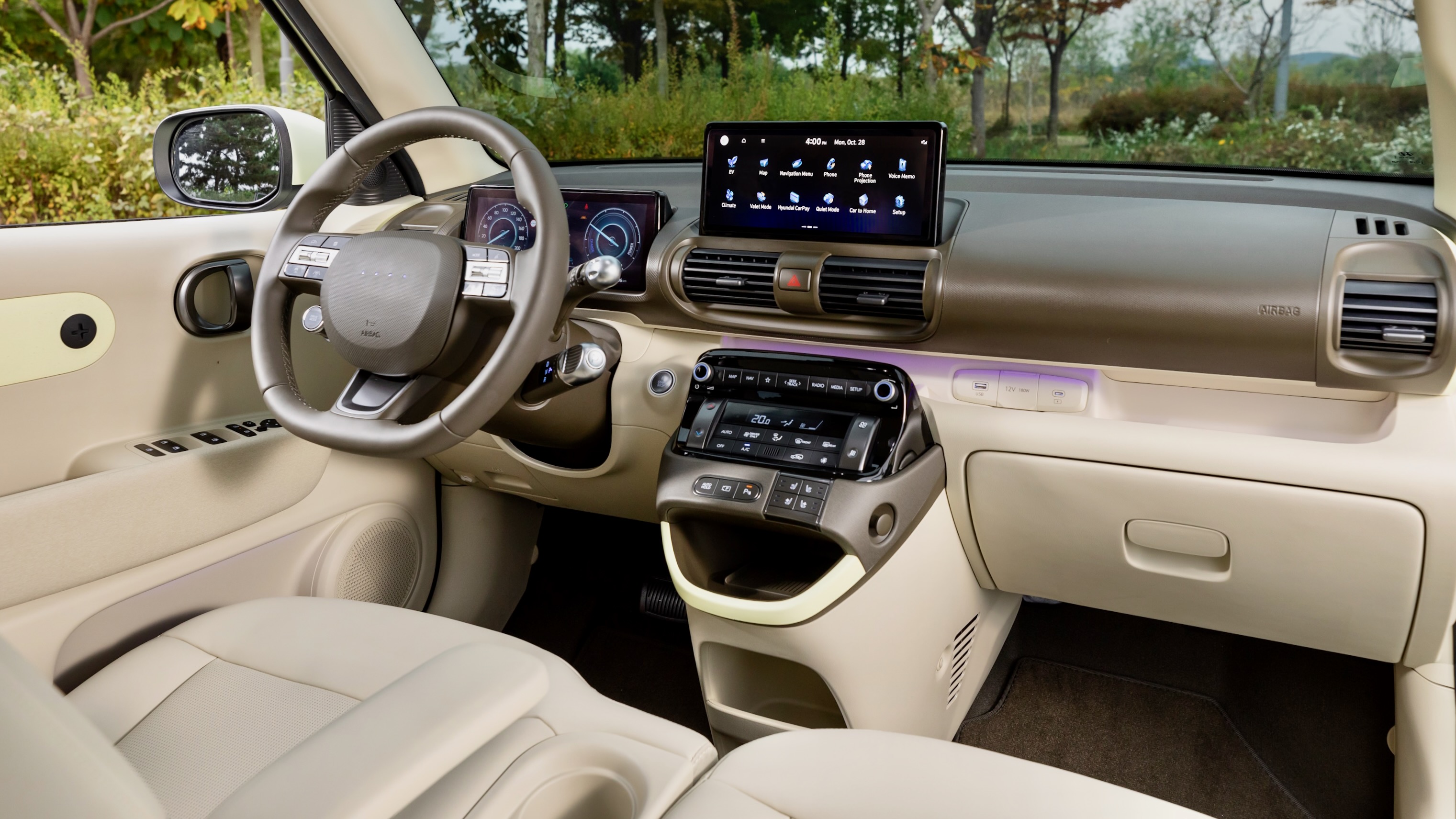
Standard equipment across the Inster range includes 15-inch alloy wheels, single-zone automatic climate control, automatic LED headlights, rain-sensing wipers, a heat pump, dual 10.25-inch screens, keyless entry and start, vehicle-to-load functionality, wireless phone charging and sliding rear seats (which open up the boot from 280 litres to 351L).
The Extended Range adds larger 17-inch wheels and the Cross further adds a sunroof, heated and ventilated front seats, a heated steering wheel, blind-spot cameras, front parking sensors, ambient cabin lighting, off-road-style bumpers and a different wheel design.
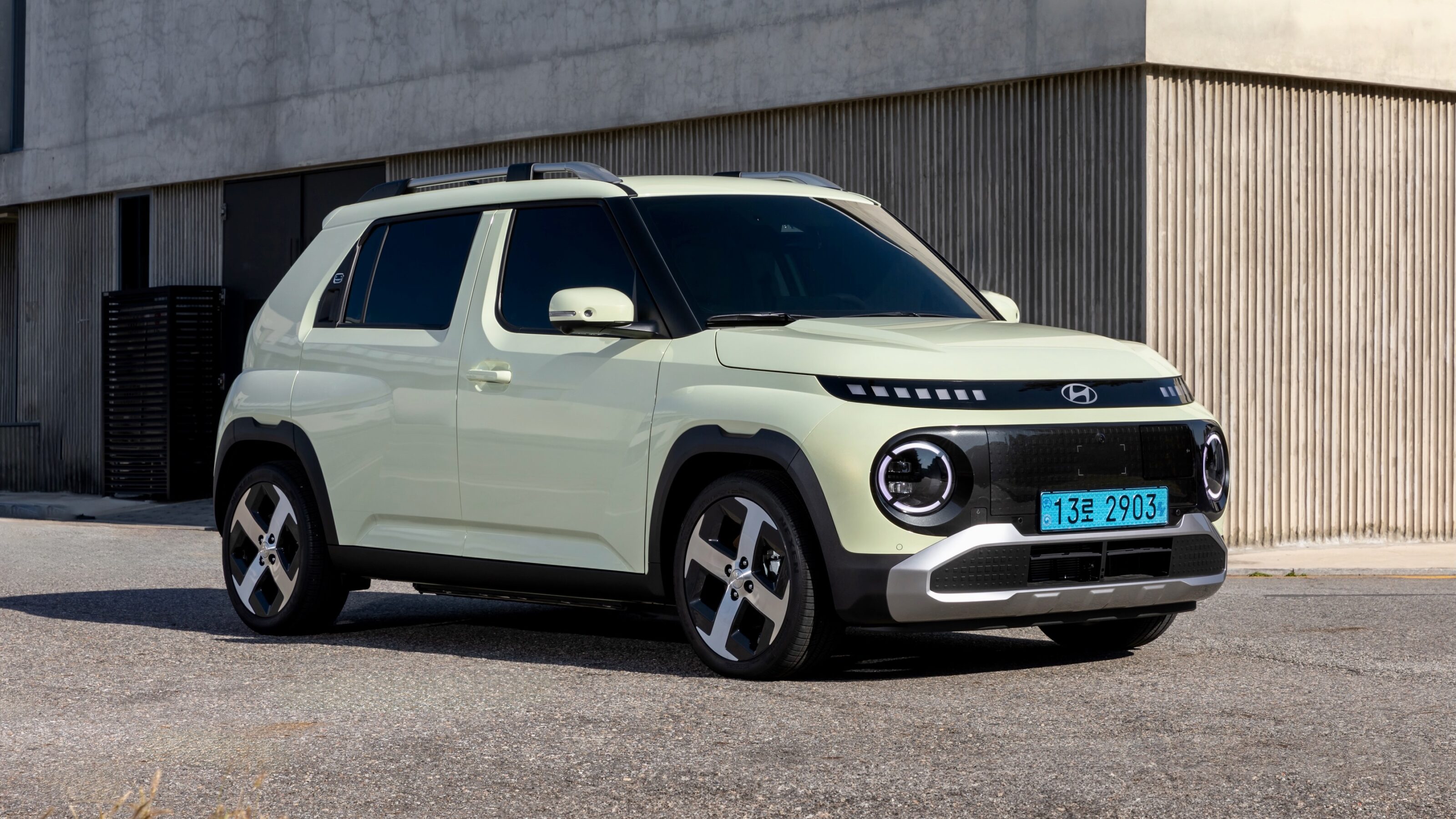
Importantly, all Inster models feature a full safety equipment suite with features such as autonomous emergency braking with pedestrian, cyclist and intersection assistance, navigation-based adaptive cruise control, lane keeping assistance with adaptive lane guidance, auto high beam, rear occupant alert, blind-spot monitoring with rear cross-traffic alert and driver attention alert.
The Inster is available in nine colours, including ‘Urban Khaki’, ‘Natural Ivory’, ‘Buttercream Yellow’, ‘Sienna Orange’ and new matte ‘Dusk Blue’, ‘Aero Silver’ and ‘Amazonas Green’ – the matte options adding an extra $1,000 to the price.
2025 Hyundai Inster pricing (plus on-road costs):
- Standard Range: $39,000
- Extended Range: $42,500
- Cross: $45,000
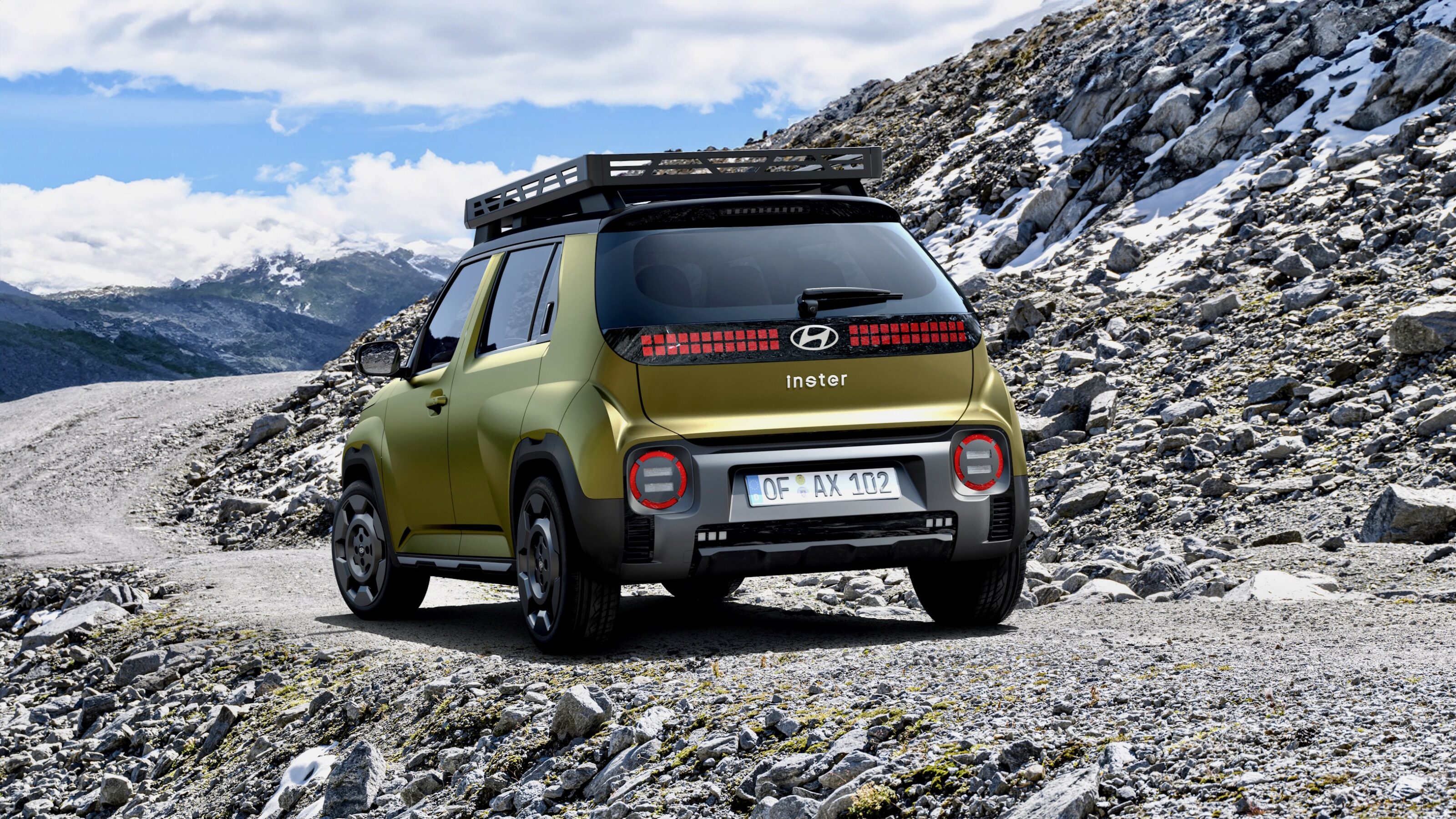
The Hyundai Inster is on sale now in Australia with local deliveries due to commence soon.
A new top-spec Platinum grade has been added to the 2025 Toyota Tundra range, which will join the entry-level Limited in Australian Toyota showrooms from May. Initially released in a single spec late last year, the Tundra’s line-up has grown to two offerings to compete better with other big utes such as the Ford F-150, Chevrolet Silverado and Ram 1500.
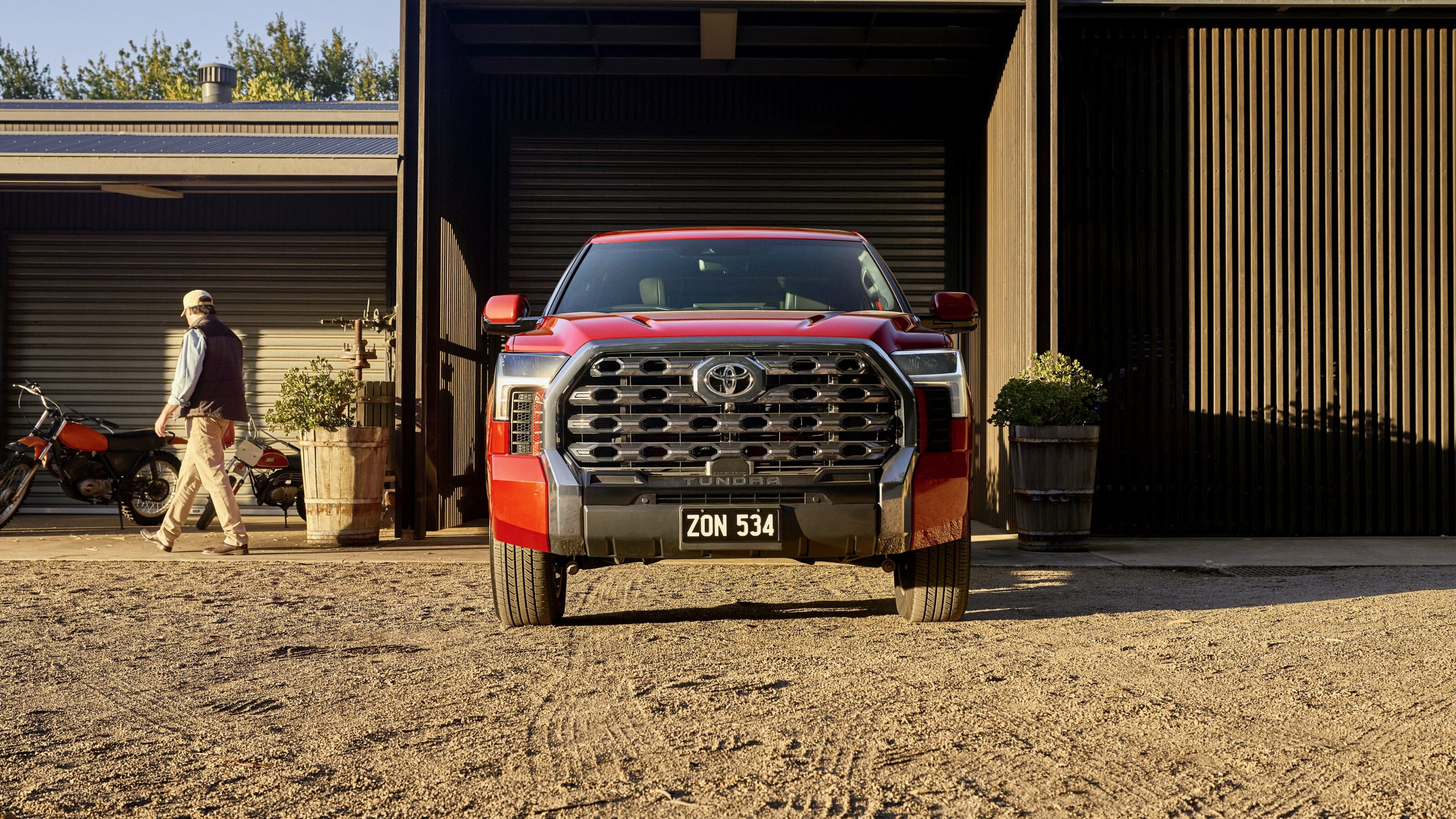
Priced from $172,990 plus on-road costs, the new Platinum grade in the Tundra line-up adds black 20-inch alloy wheels, a black tailgate handle, a chrome grille with a mesh insert, dark chrome exterior trim, rain-sensing wipers, LED tub lights and a panoramic roof.
Inside the Tundra Platinum, leather upholstery, 10-way electric front seats with four-way lumbar adjustment and massaging, a heated steering wheel, heated and ventilated outboard rear seats, a panoramic roof, ambient interior lighting and a 10.9-inch head-up display also feature.
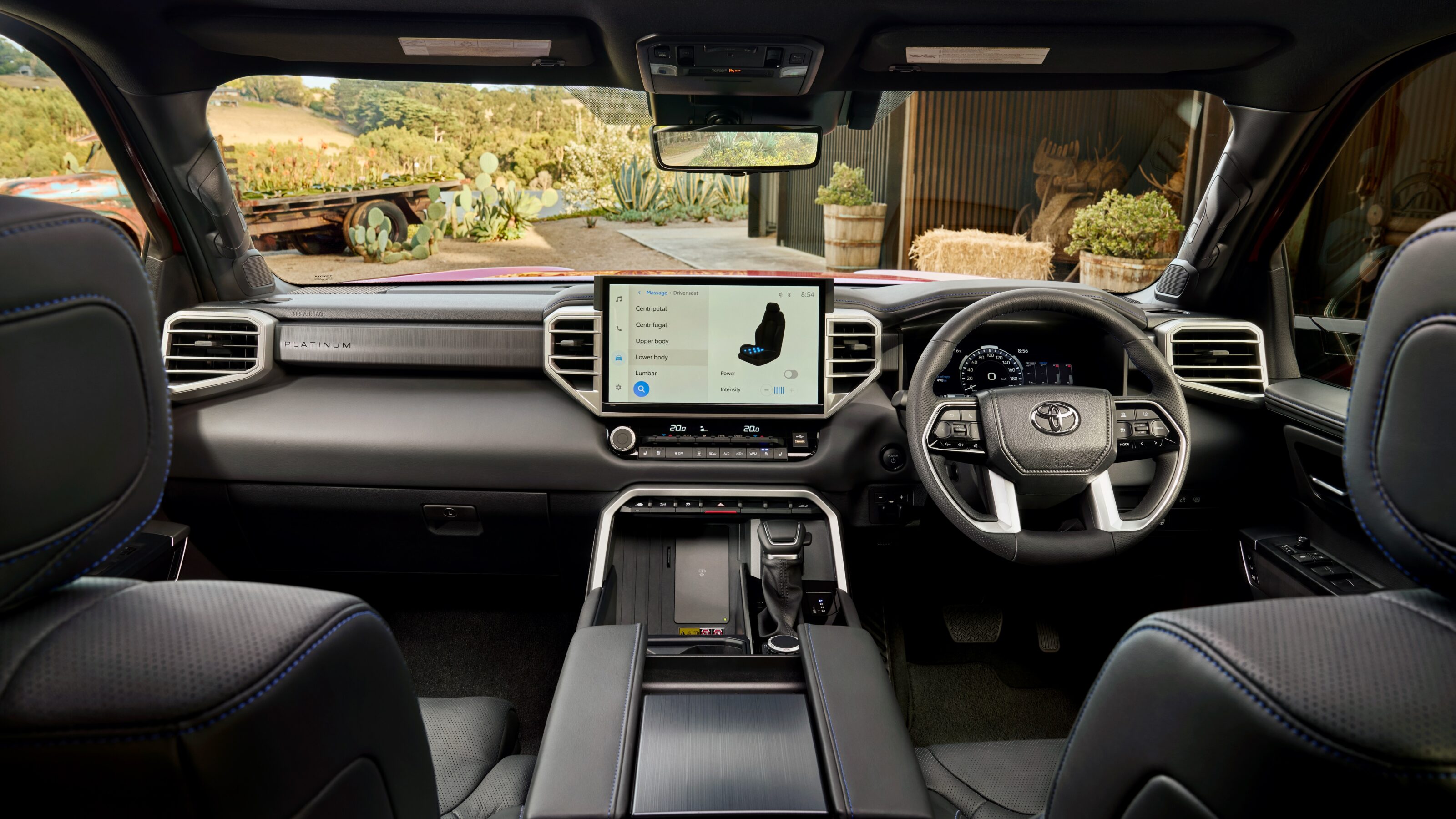
That’s on top of the features in the Limited, such as automatic LED lighting, synthetic leather upholstery with heated and ventilated front seats, a 12.3-inch digital driver’s display, a 14-inch touchscreen with wireless Apple CarPlay and wired Android Auto, DAB+ digital radio, a 12-speaker sound system and a wireless phone charger.
Safety equipment on both Tundra models includes eight airbags, autonomous emergency braking with pedestrian and cyclist detection, blind-spot monitoring with rear cross-traffic alert, adaptive cruise control, lane trace assist, lane departure assist, a 360-degree camera and front and rear parking sensors.
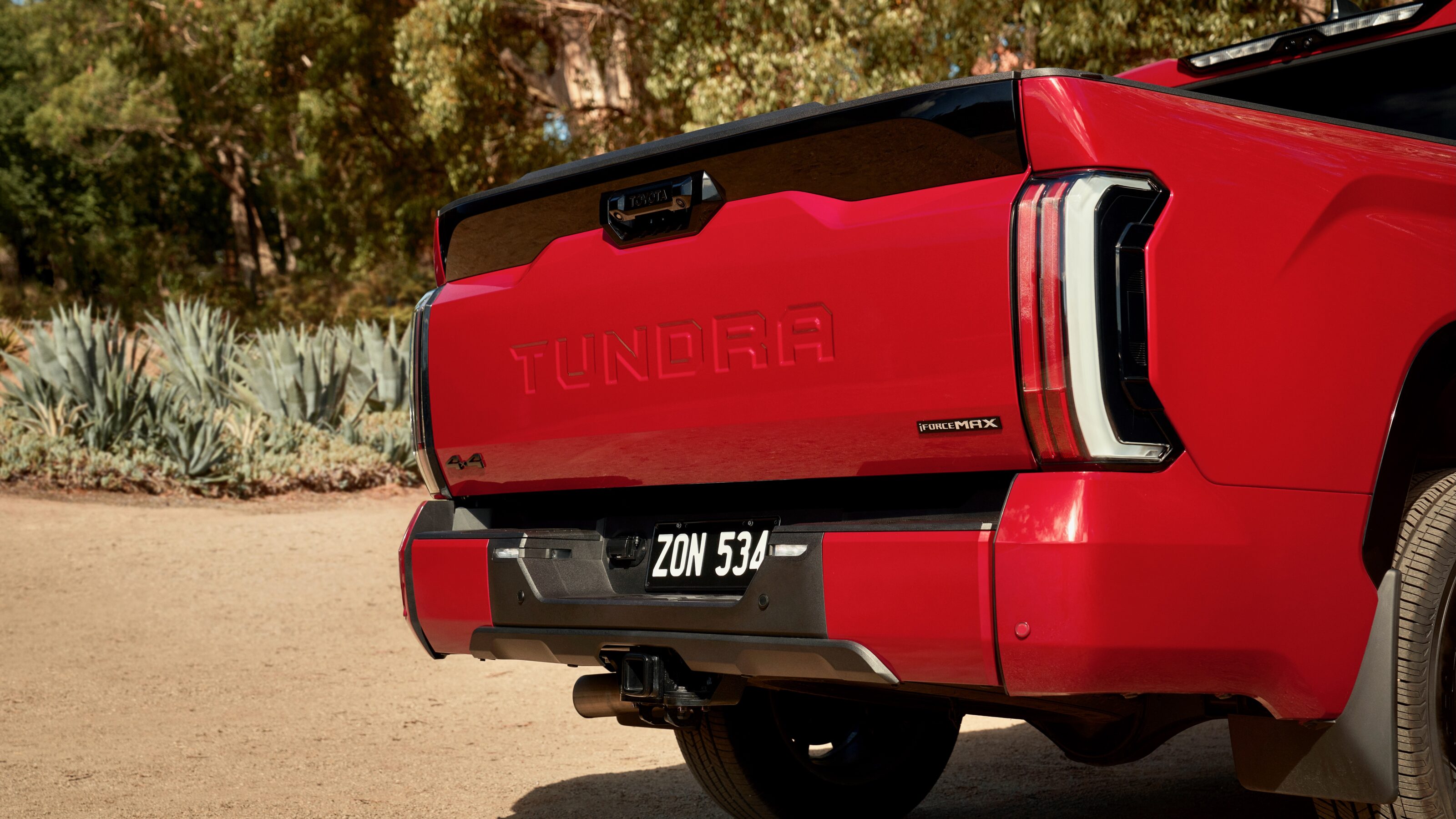
Under the bonnet of both Tundra models is a twin-turbocharged 3.4-litre petrol V6 engine mated to an electric motor and 6.5Ah nickel metal hydride battery. Combined outputs are a huge 326kW/790Nm. That’s mated to a 10-speed automatic transmission and a part-time four-wheel drive system.
Toyota Tundra pricing (plus on-road costs):
- Limited: $155,990
- Platinum: $172,990
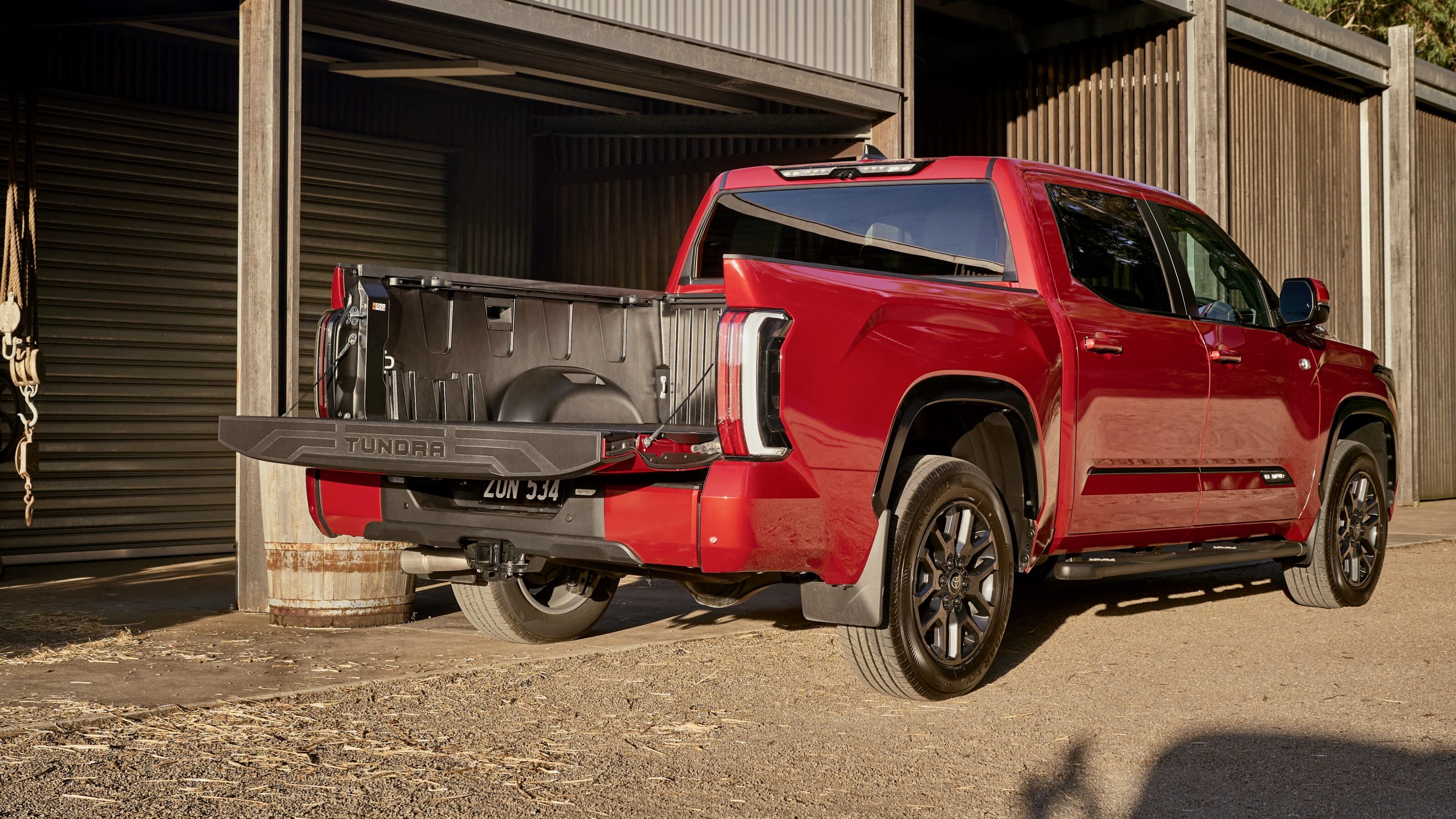
The new Platinum variant of the Tundra will go on sale in Australia in May, with the first local deliveries to commence then.
Ford Australia has added a new all-wheel drive Trail variant to its Transit Custom line-up, with the Ford Transit Custom Trail now available to order. Priced from $61,990 plus on-road costs, the Trail is due in local Ford showrooms by the end of 2025 and is based on the most popular Trend LWB variant.
The Trail uses the same 125kW/390Nm 2.0-litre four-cylinder turbo-diesel and eight-speed automatic transmission already offered across the Transit Custom range. Crucially, the Trail adds electronically-controlled all-wheel drive – the first time AWD has been offered on an Australian Transit Custom. The brand is expanding the Transit Custom range to enhance its appeal – the eight-seat Tourneo was also recently launched locally by the company.
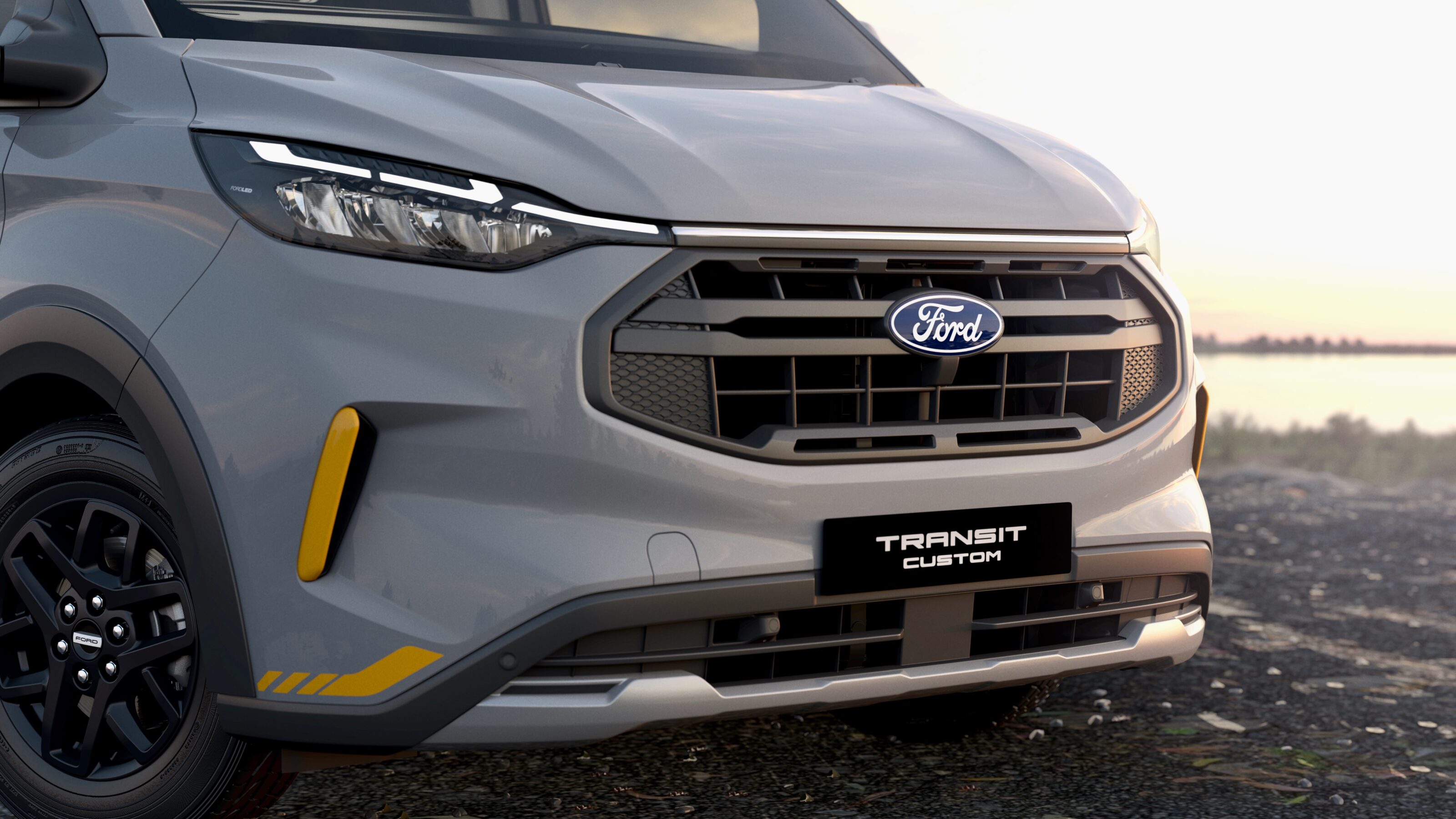
Its $61,990 +ORC price is $4,000 more than the Trend LWB on which it’s based, however it adds more than just all-wheel drive: 16-inch alloy wheels, a unique grille design, black wheel arch surrounds and a ‘Trail’ graphics pack are added.
On the inside, the Ford Transit Custom Trail also adds synthetic leather upholstery with embossed Trail logos on all three seats – a two-seat layout is also available for an extra $150.
That’s on top of the Trend’s equipment, including automatic LED headlights, heated outboard seats, an eight-way manually adjustable driver’s seat, keyless entry and start, a 13-inch touchscreen and front and rear parking sensors.

Options for the Ford Transit Custom Trail include dual side load doors are a $1,000 option, a rear liftgate is $700 extra and any paint colour other than white is also an extra $700 – plus, it can be painted in any colour through Ford’s ‘SVO’ (Special Vehicle Operations) factory paint for an extra $1,400 and offering over 100 colour choices.
The Ford Transit Custom Trail is now available to order from Ford dealerships ahead of local deliveries commencing late this year.
Great Wall Motors (GWM) has significantly bolstered its Cannon range with the addition of new cab chassis and dual cab models, providing Aussie customers with a wider selection in the ever expanding segement.
Building on the recent unveiling of the Cannon 2.4-litre, the lineup now includes a Premium grade that serves as the entry-level specification for both the Single Cab Chassis (4×2), priced at $35,490, and Dual Cab Utility (4×4), priced at $39,490 with the 2.0-litre powertrain. The Dual Cab Chassis with tray (4×4) is also available in the top-tier Lux variant, priced at $42,490, boasting the larger 2.4-litre engine.

The new 2.0-litre turbo diesel engine, mated to an 8-speed automatic transmission, is a carryover from the previous model, but it now delivers a more impressive performance profile and a solid 120kW of power and 400Nm of torque.
The vehicle’s fuel efficiency has been recertified and improved, says GWM, with the Single Cab Chassis now consuming a claimed 7.6L/100km and the Dual Cab coming in at a claimed 8.1L/100km.
The Single Cab Chassis variant of the GWM Cannon has been engineered with an extended wheelbase of 240mm, which not only improves the vehicle’s load distribution and handling but also allows for a more substantial payload capacity of 1150kg. This upgrade is designed to make the Cannon a more attractive option for commercial and fleet operators.

To sweeten the deal, all the new Cannon variants come with GWM Care, which includes a 7-year/unlimited kilometre warranty, five years of roadside assistance, and five years of capped price servicing.
Cannon PREMIUM Single Cab Chassis 4×2
- 2.0L 4-cylinder turbo diesel
- Front & rear ventilated discs
- Front suspension: coil spring double wishbone
- Rear suspension: leaf spring live axle
- Electric power steering
- Drive modes: Standard, Sport, Eco
- Towing: 750kg unbraked towing capacity; 3,200kg maximum braked towing capacity
- 18” two tone chrome alloy wheels
- Steel tray with GWM logo on tailgate
- Auto LED headlights with DRL + electric levelling
- Auto high beam
- Fog lights with steering illumination
- LED taillights
- Side steps
- Shark fin antenna
- Smart keyless entry (front)
- Driver 6-way manual adjustable seat
- Front passenger 4-way manual adjustable seat
- Single zone climate control
- 3 x pre-wired 12v accessory buttons
- Power windows – auto windows + anti pinch (driver)
- 12.3” touchscreen with wireless Apple CarPlay® and Android Auto™
- Front USB outlets (USB-A)
- 7” digital instrument cluster
- 4-way steering column adjustment
- Electronic park brake with auto hold
- Automatic rain-sensing front wipers
- Multi-function steering wheel
- Adaptive cruise control (ACC)
- Reversing camera
- Rear parking sensors
- Tyre pressure monitoring system (TPMS)
- Trailer sway mitigation
- Hill ascent / descent control
- Adaptive cruise control
- Collision Mitigation (ESC, AEB, LKA, LDW, LCK, ELK)
- AEB junction assist
- Front Collision Warning (FCW) (pedestrian + cyclist)
- Traffic sign recognition
- Traffic jam assist
- Intelligent turning
- Smart dodge
- Emergency signal system (indicators)
- Driver fatigue monitoring system
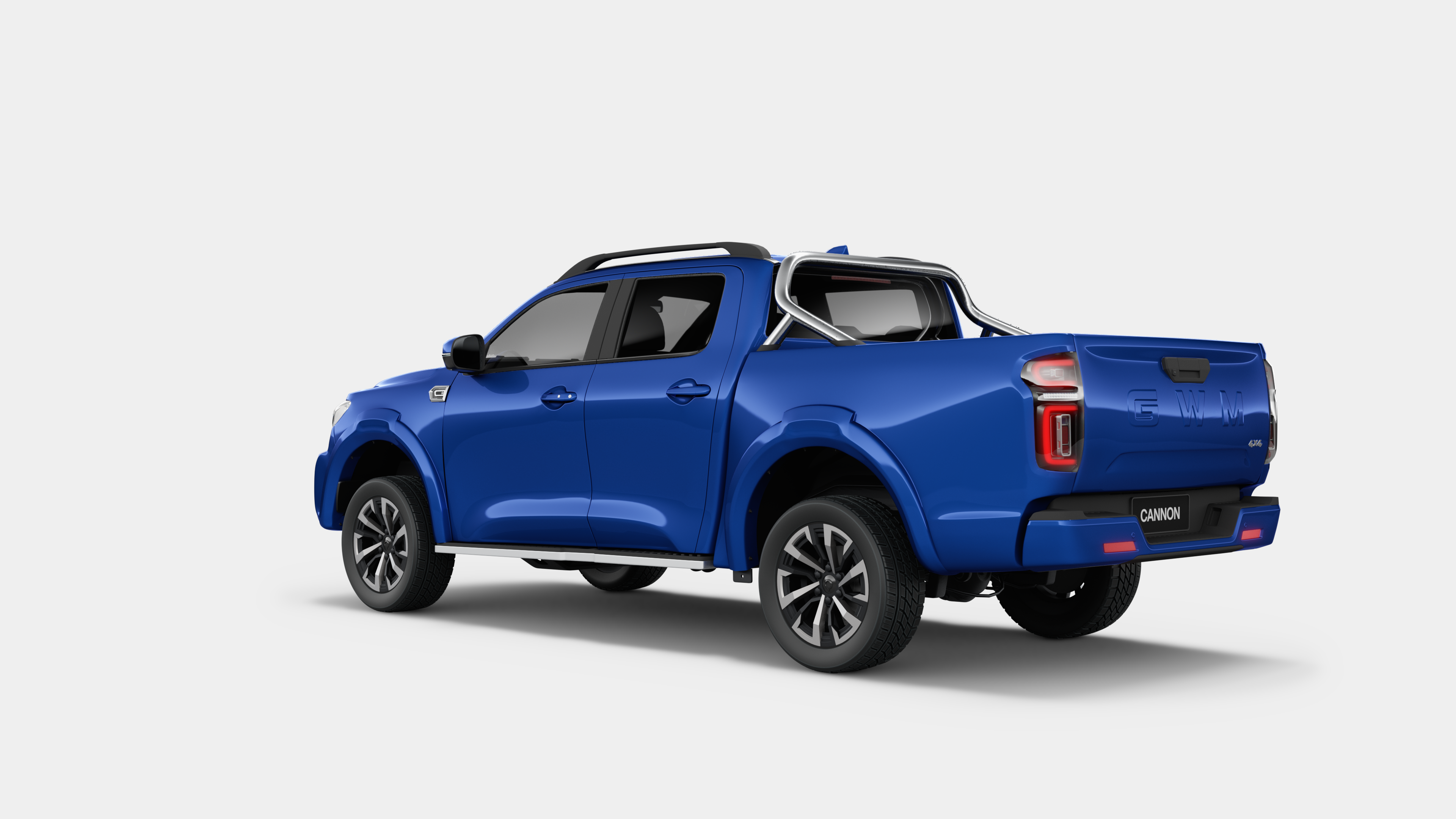
Cannon PREMIUM Dual Cab 4×4
- Low range transfer case
- Rear differential lock (electric)
- Drive modes: Standard, Sport, Eco, 4H, 4L
- Roof rails
- Spray-in bedliner
- Chrome sports bar
- Power fold exterior mirrors
- Tailgate dampener / struts
- Central locking with tailgate locking
- LED rear fog lamp
- 60:40 rear seats with centre armrest
- Rear A/C outlet
- Wireless phone charger
- Sunvisors with illuminated vanity mirror
- 6 speaker audio with DAB+ digital radio
- Front & rear USB outlets (USB-A / USB-C)
- ISOFIX child restraints x2
- Rear child door locks
- Blind spot monitor
- Door open/vehicle approach warning (DOW)
- Rear collision warning
- Rear cross traffic alert with brake
Cannon LUX Dual Cab Chassis 4×4
- 2.4L 4-cylinder turbo diesel
- Rear differential lock (electric)
- Drive modes: Standard, Sport, Eco, 4H, 4L
- Towing – 3,500kg maximum braked towing capacity
- Roof rails
- Power fold exterior mirrors
- 60:40 rear seats with centre armrest
- Rear A/C outlet
- Faux leather steering wheel
- Wireless phone charger
- Sunvisors with illuminated vanity mirror
- 6 speaker audio with DAB+ digital radio
- Front & rear USB outlets (USB-A / USB-C)
- Remote engine start (key)
- ISOFIX child restraints